HOW TO GROW CHILI PEPPERS
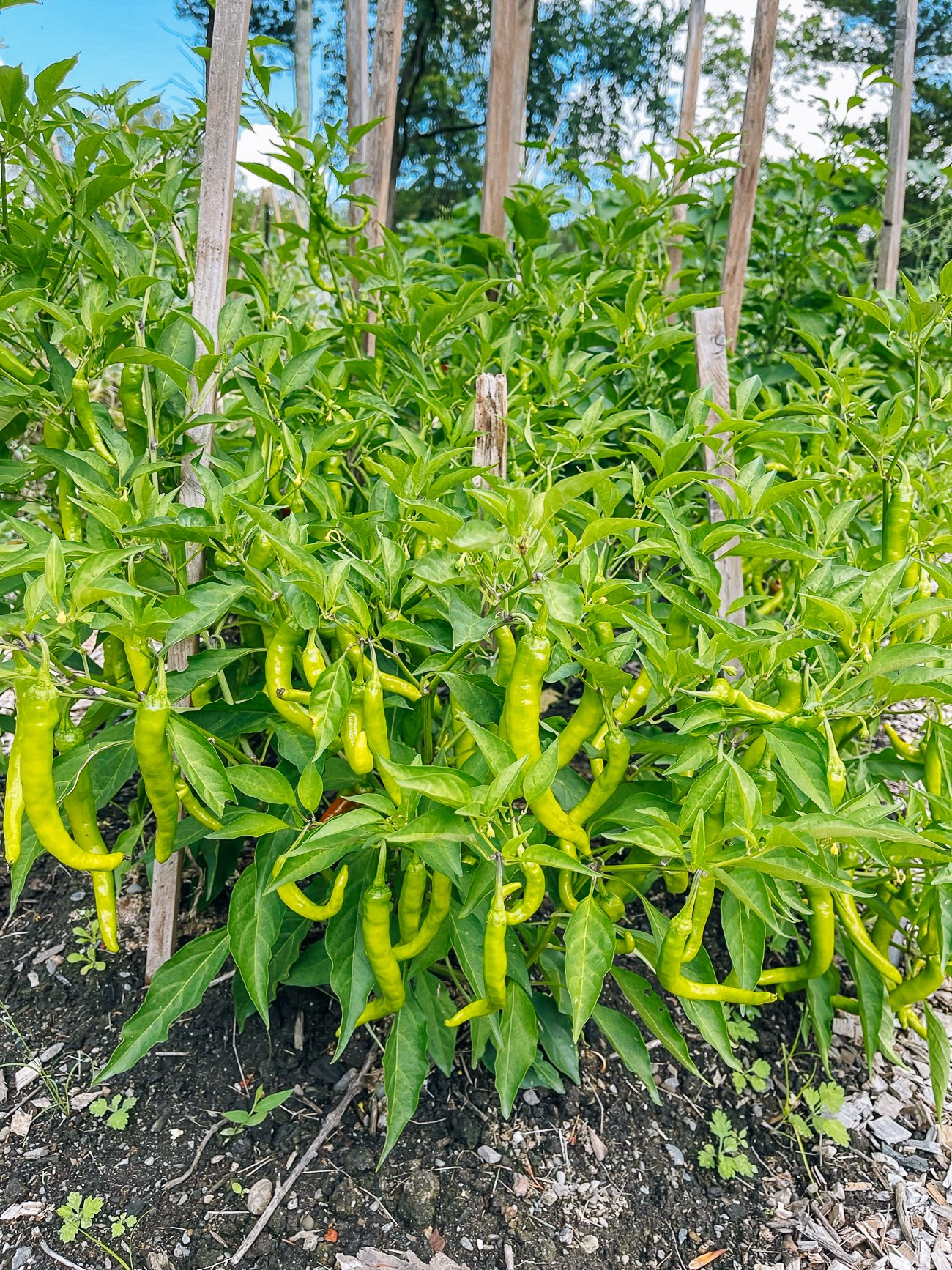
Here’s the fourth installment of our How to Grow Chinese Vegetables series: how to grow chili peppers. We’ll be talking specifically about Asian varieties you can grow, though the principles for growing different chilies and peppers are largely the same.
We’ve found that chilies are easy to grow from small plants or from seed, as long as you have lots of light and heat!
This series is a collaboration between The Woks of Life and Choy Division, a regenerative Asian vegetable and herb farm in the Hudson Valley. Check out our previous posts on how to grow bok choy, napa cabbage, and Chinese eggplant.
OUR LATEST RECIPE VIDEOS
In this post, we’ll share farmer Christina Chan’s knowledge on growing chilies, Choy Division team member Nicole Yeo’s research on the history of chilies in China and across Asia, as well as what we learned this past summer growing them in our garden!
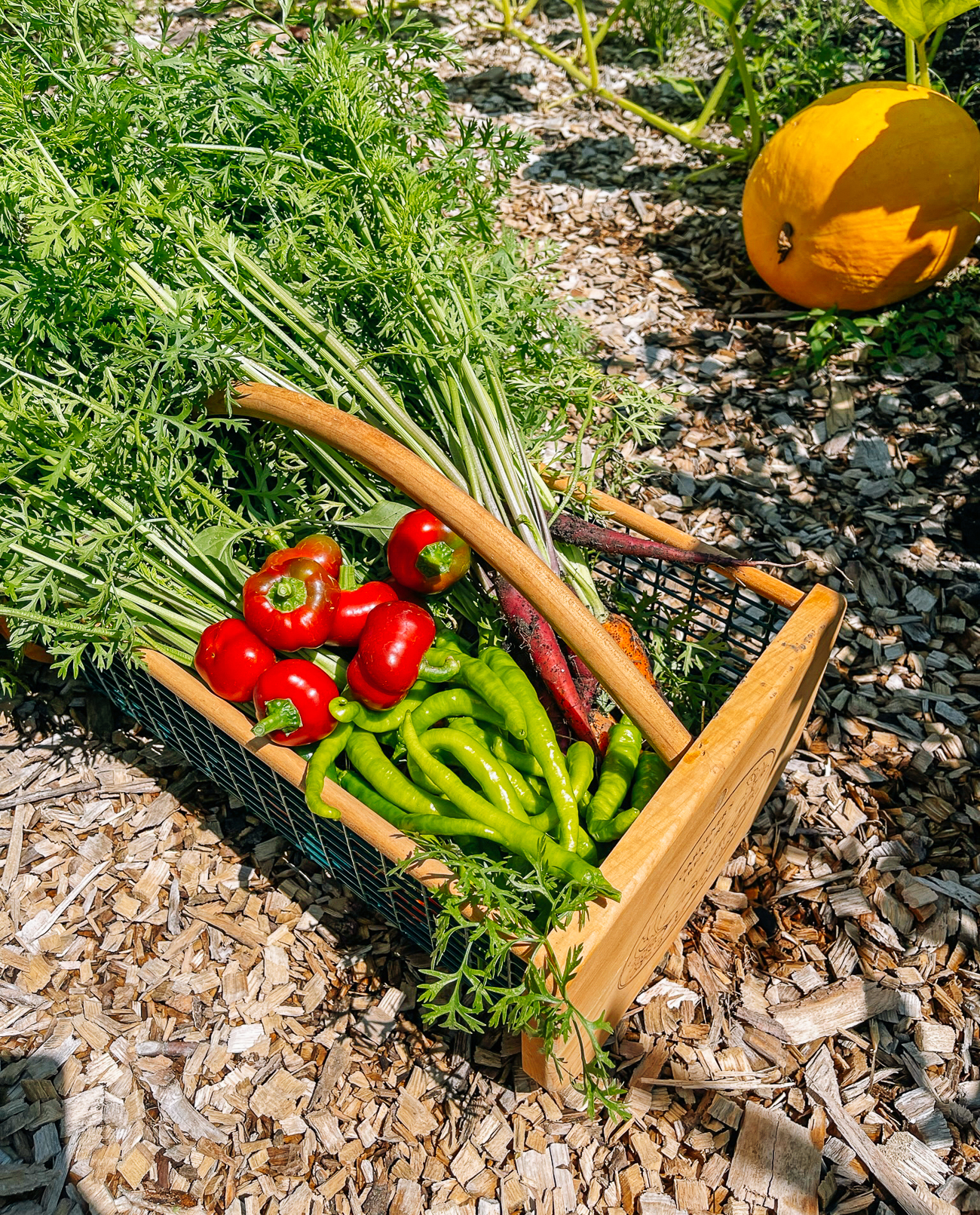
A PRIMER ON PEPPERS & CHILIES
Like eggplants, potatoes, and tomatoes, chili peppers are in the Solanceae family—the nightshades.
There are five domesticated species of pepper, the most common of which is capsicum annuum. The name “annuum” may make it seem like an annual—a plant that completes its lifecycle from germination to seed production in one season. However, these plants can actually survive several seasons in warmer climates (i.e. in the absence of frost).
Capsicum annuum includes most of the best known cultivars, including bell peppers, bird’s eye chilies, shishito peppers, cubanelles, jalapeños, serranos, poblanos, and cayenne peppers.
The second most common species is Capsicum chinense, which includes some of the world’s spiciest peppers, such as habaneros, scotch bonnet peppers, the Carolina Reaper, and Hainan yellow lantern chilies.
NOTE:
Another misnomer, Capsicum chinense did not originate in China. All chili peppers hail from the Americas. In the late 1700s, Dutch botanist Nikolaus Joseph von Jacquin (say that five times fast) misnamed the species because of its use in Chinese cuisine, mistakenly believing that the peppers hailed from China.
Chili peppers actually arrived in Asia in the late 16th century with Portuguese and Dutch explorers. Since then, chilies have become an integral part of several Chinese regional cuisines, including Sichuan cuisine, Guizhou cuisine, and Hunan cuisine.
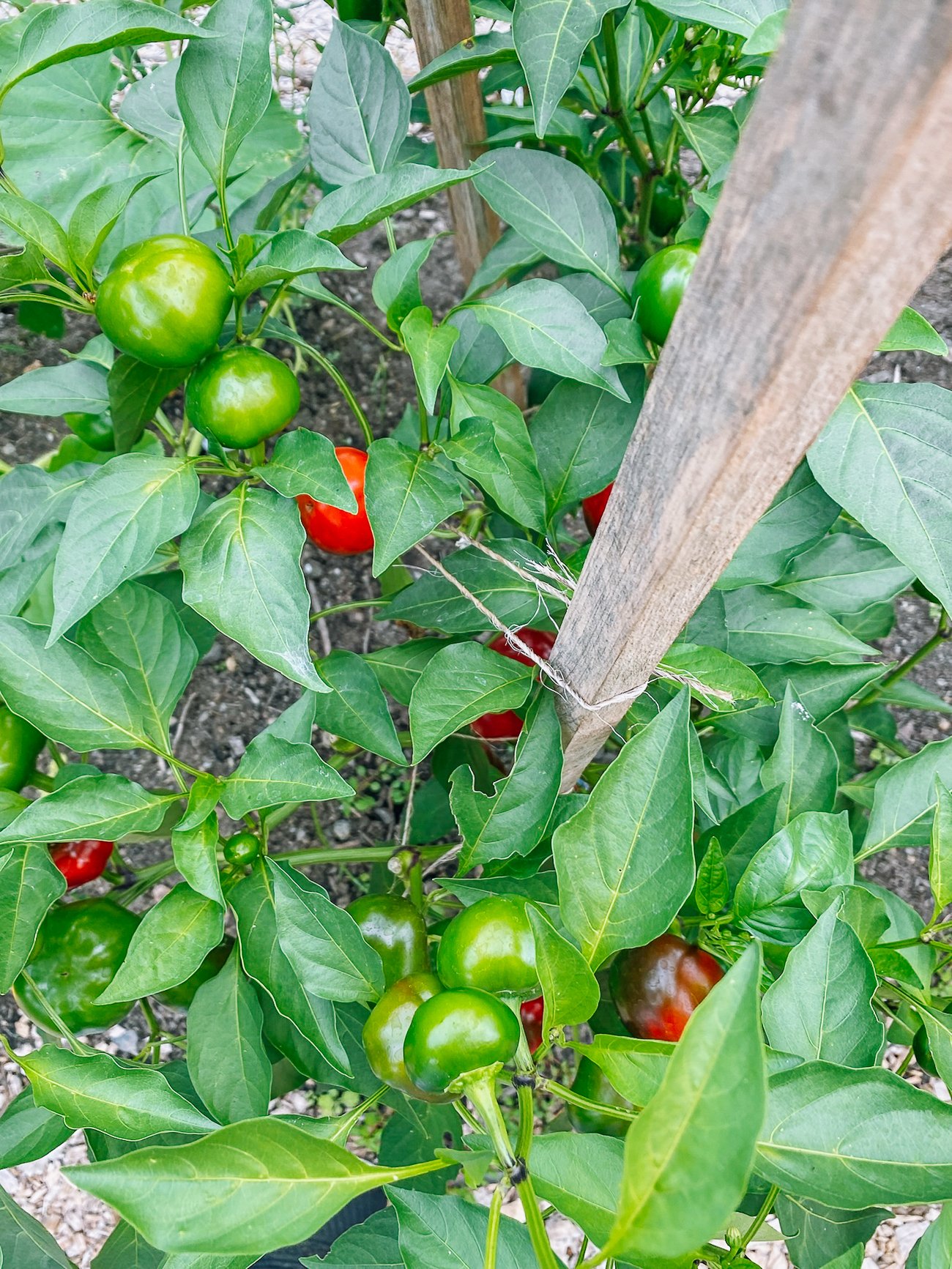
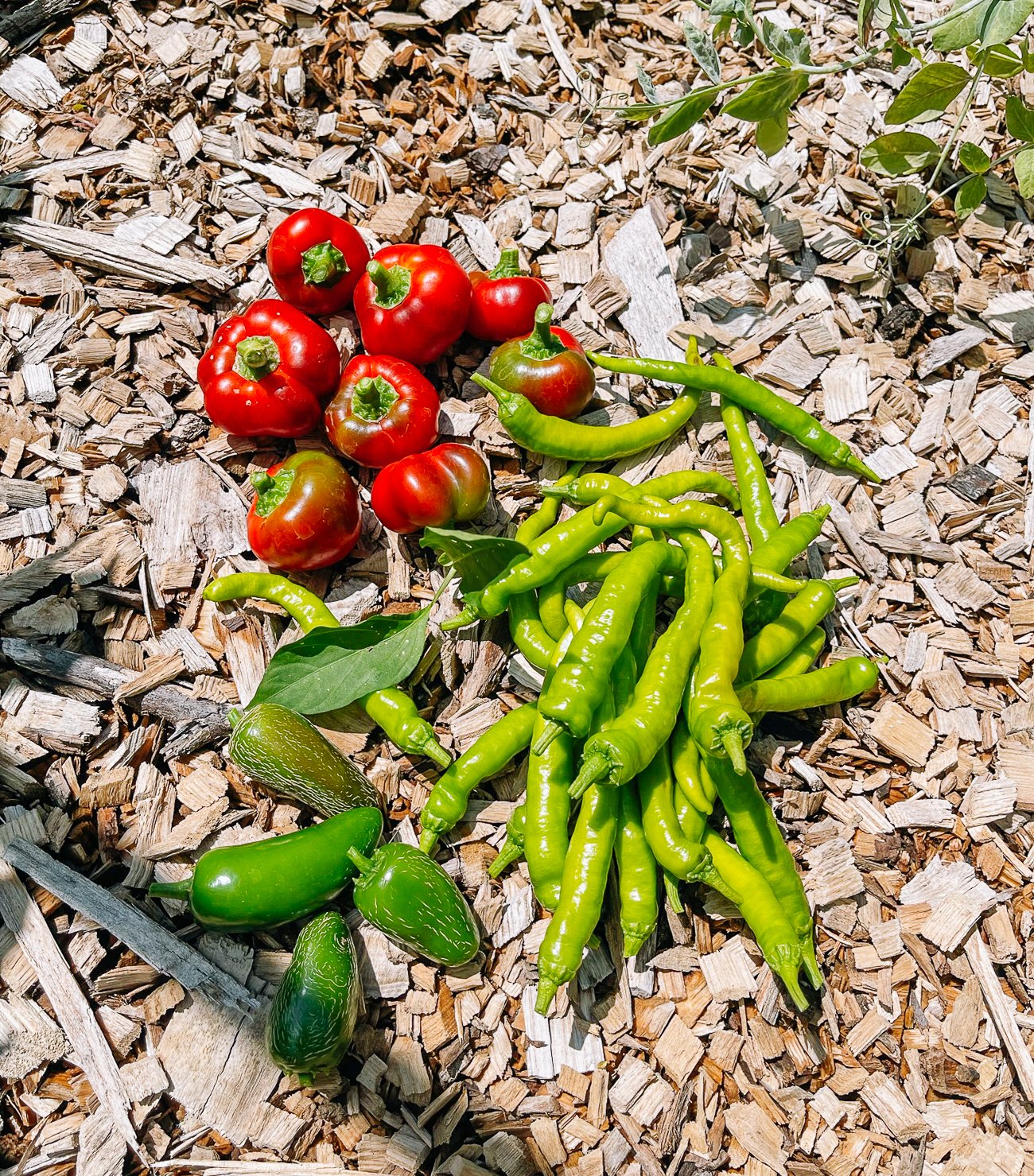
Generally, the smaller the chili pepper, the spicier it is. Much of a pepper’s heat is in the pith or veins (the softer, lighter colored ribs inside the chili).
A chili’s spice level is quantified on a system of measurement called the Scoville scale. To give you an idea of the range, a sweet bell pepper has a score of 0. A jalapeño can range from 2,500-10,000 Scoville units. The Carolina Reaper (which currently holds the world record for spiciest pepper) tops out at 1,500,000 Scoville units!
According to Christina, chilies actually came before the sweet pepper, and the sweet pepper was bred FROM chili peppers. Cool, huh?
VARIETIES YOU CAN GROW
There are so many different types of peppers you can grow, as cultures around the world have adapted the chili pepper to suit their own tastes. Believe it or not, there are approximately 4000 varieties in total!
When it comes to choosing a variety for your own garden, it’s really up to what you’re looking for in terms of heat level and flavor.
Christina shares some of the most common East Asian varieties below, along with seed sources:
COWHORN PEPPER (CHINESE):
This long, green, and slightly curled pepper is the one you find most often in Chinese grocery stores.
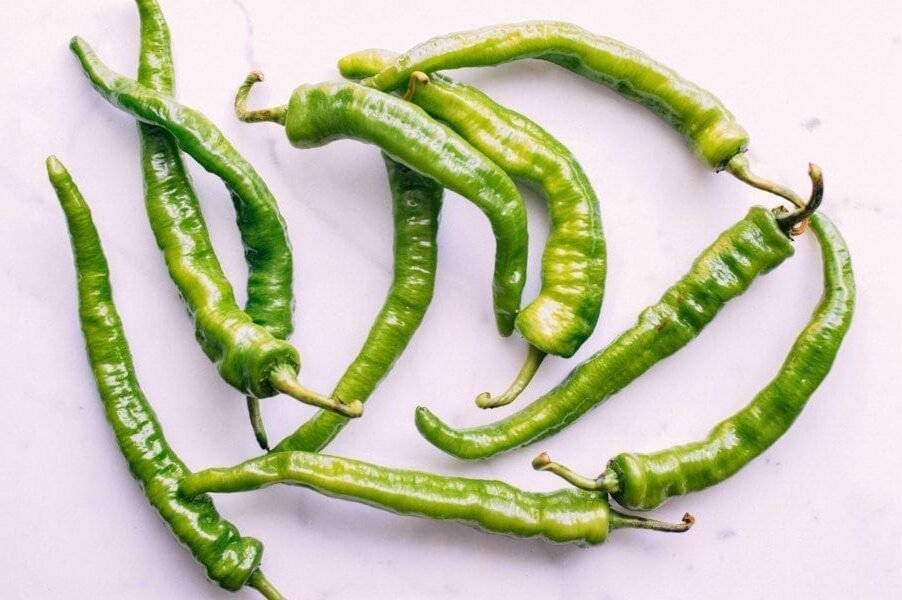
We usually call them “long hot green peppers” here on the blog, and use them in many of our recipes including:
- Egg Stir-fry with Peppers
- Tiger Skin Peppers
- Beef & Pepper Stir-fry
- Pork & Pepper Stir-fry
- Three Pepper Chicken
- Dim Sum Stuffed Peppers
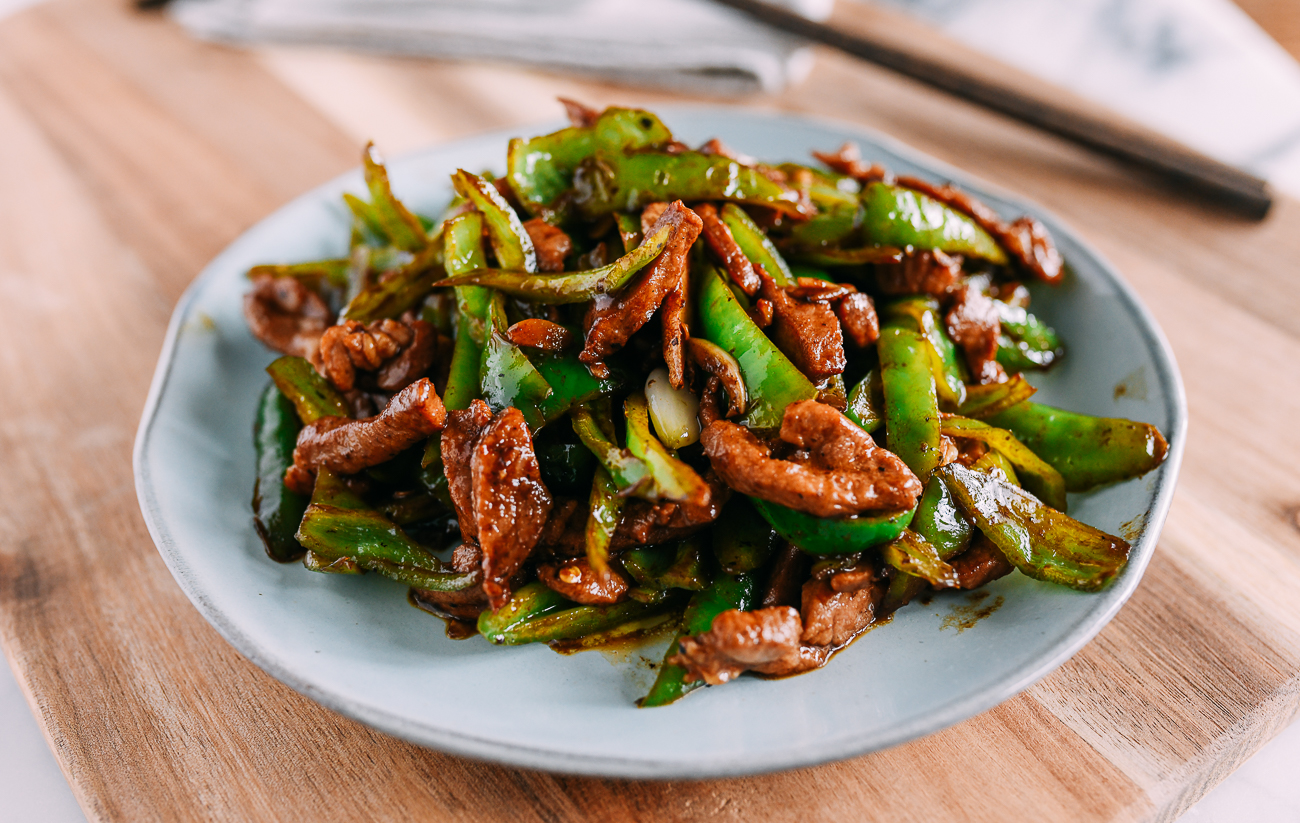
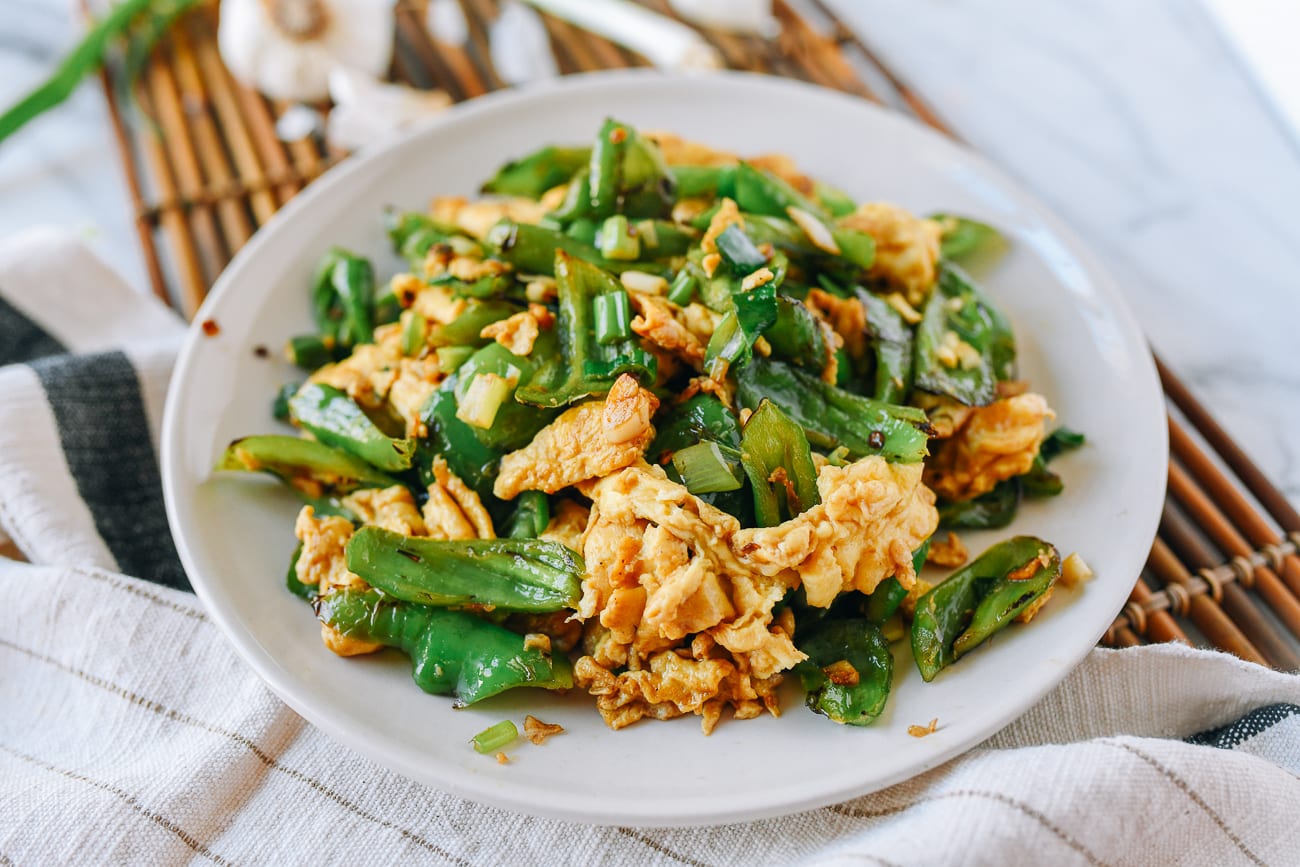
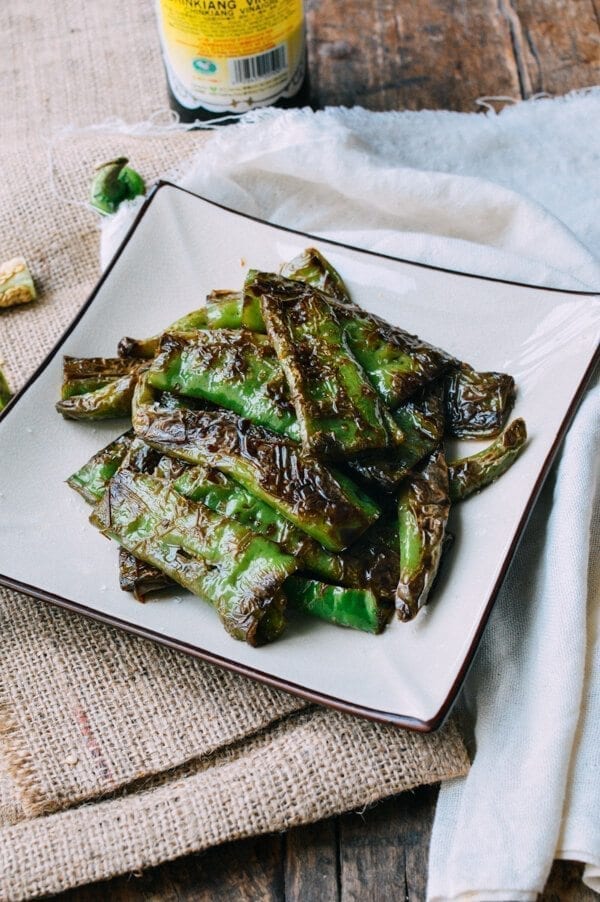
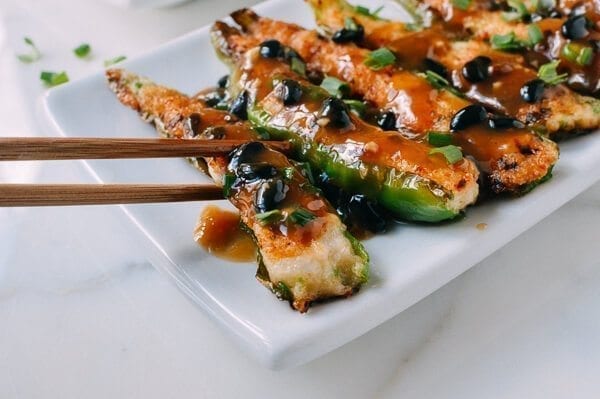
They have a medium heat level, and are often used green. They have a thin skin, crunchy texture, and tender flesh, making them ideal for stir-frying. We’ve found that these peppers can vary pretty widely in terms of heat level, ranging from mild to pretty spicy!
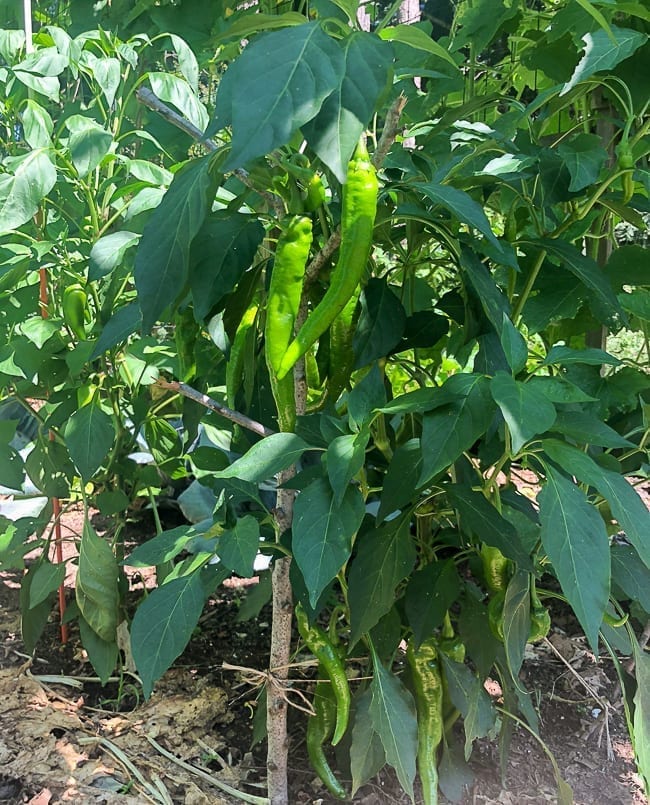
Cowhorn peppers may also be called serial spinner peppers, or long horn peppers. We have also seen them in regular non-Asian grocery stores labeled as “long hot peppers,” “italian sweet peppers,” and “long hot italian peppers.”
We’re not sure if those are the same variety, but they are at least very similar in terms of flavor, texture, and heat level. Another similar variety: Anaheim peppers.
According to Christina, they aren’t often found in American seed catalogs, but you can find them here at AsianGarden2Table.
FACING HEAVEN CHILI (CHÁOTIĀN JIĀO, 朝天椒) AND ER JING TIAO CHILIES (ÈR JĪNGTIÁO, 二荊條) (CHINESE)
These are two famous varieties of Sichuan chili, commonly dried, fermented, and occasionally used fresh.
Facing Heaven Chilies are so named because the chilies grow upside down, pointing towards the sky. This actually makes them more attractive to birds, which are tolerant to capsaicin (the source of the spice) and help spread the pepper seeds after consumption.
They are a type of cone pepper, native to Central and South America and further cultivated in China, where they have become an important ingredient in Sichuan cuisine. They’re a medium-hot variety with a heat level similar to that of tabasco peppers. Vividly red, you’ll find them in abundance in many Sichuan dishes.
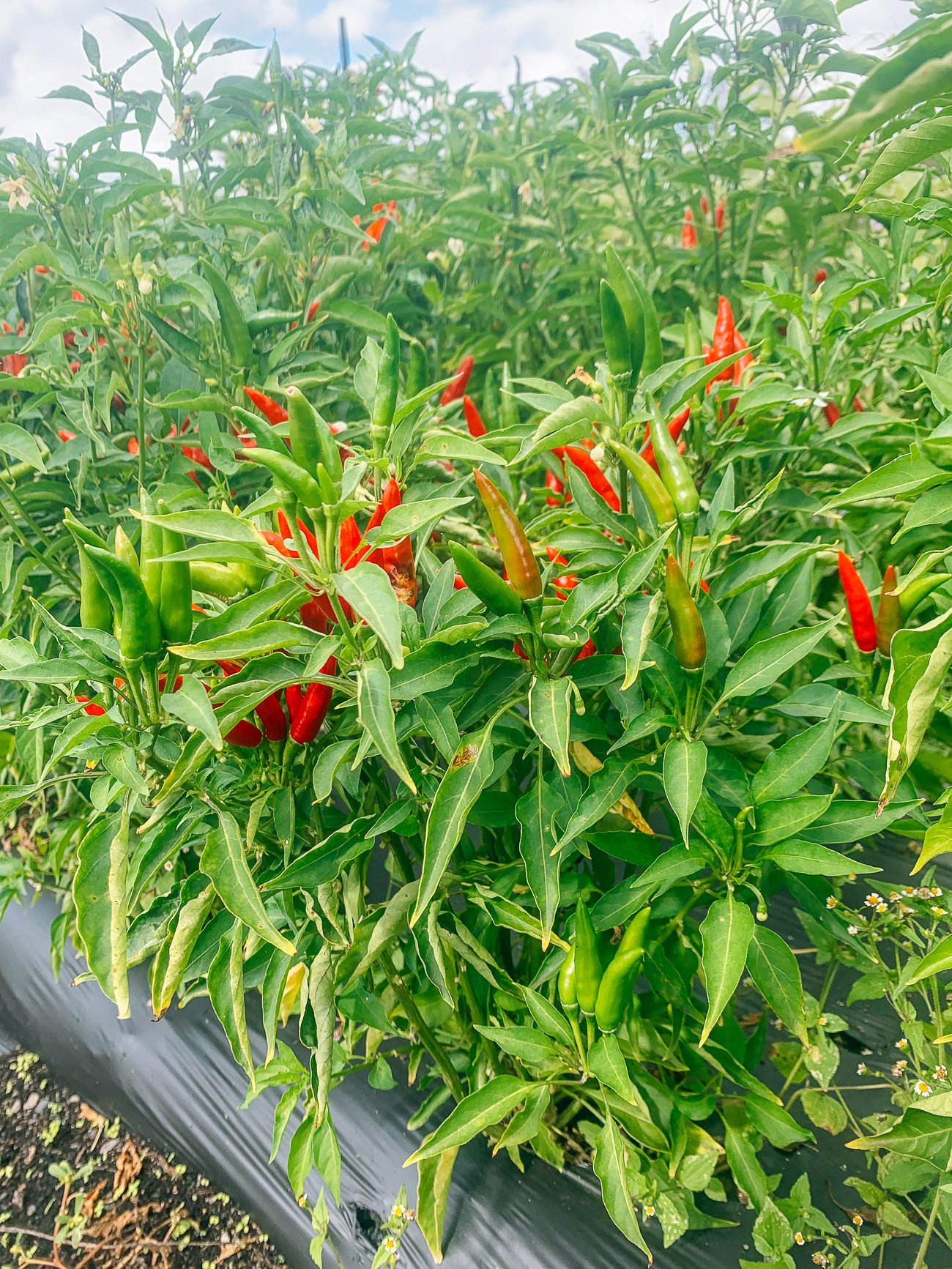
There are various types of facing heaven pepper (see an example of dried facing heaven chilies available at The Mala Market).
Er Jing Tiao Chilies (also available dried from The Mala Market) are arguably the most loved chili in Sichuan province, providing a unique, distinctively fruity flavor that is difficult to reproduce with other chilis.
They’re unusually long (4-5 inches/10-12 cm), and have a deep color, mild-to-moderate heat, and a robust fragrance.
Find them dried in many dishes such as Sichuan Boiled Fish or Chongqing Chicken, as well as in chili oil. They’re also fermented into Sichuan spicy bean sauce and used to make pickled chilies.
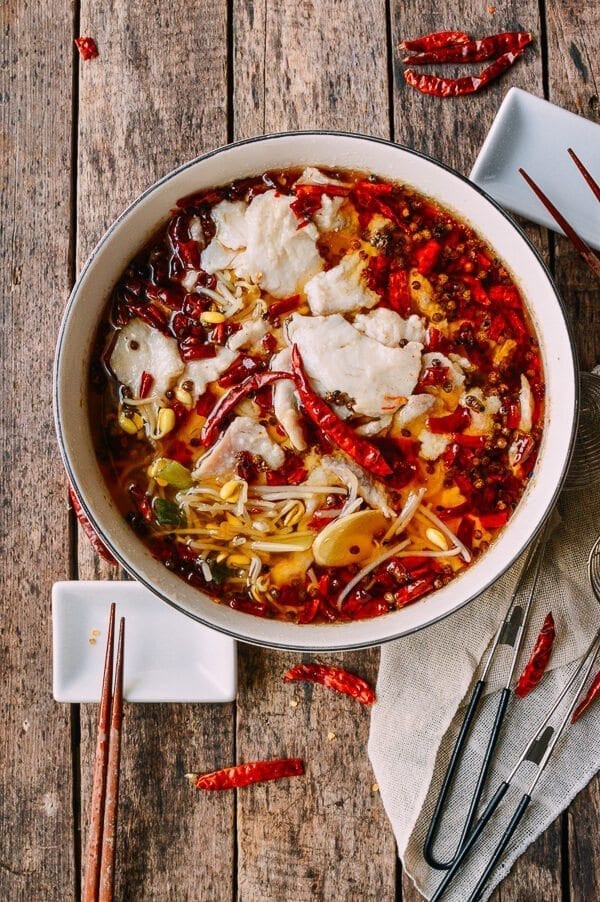
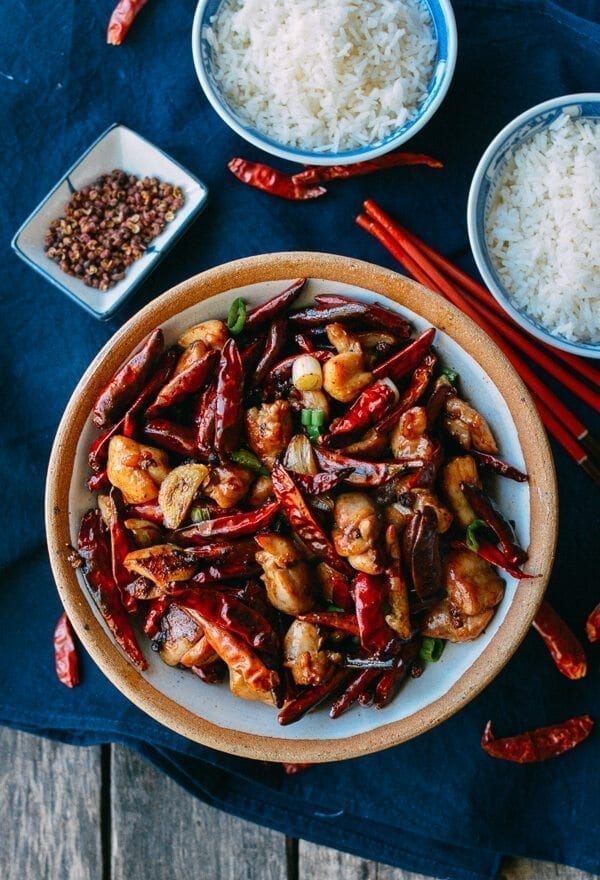
With the emergence of global interest in spicy foods, these two pepper varieties have grown in popularity and demand. They remain rare, however.
These peppers aren’t generally available fresh in the U.S., and it is even more difficult to procure seeds to grow. Christina only knows of one source for Facing Heaven chilies at Caribbean Garden Seed, and we haven’t found a source for Er Jing Tiao. If you know of one, share it with us in the comments!
BIRD’S EYE CHILI (THAI)
These small, pointed 2-3 inch (5-7 cm) peppers can be used red or green, and pack a spicy punch (50,000-100,000 on the Scoville scale). In Thai, they’re known as prik ki nu (พริกขี้หนู)—literally “mouse dung chili,” owing to their shape. That said, there are tons of different Thai chili varieties, not to mention the different subtypes!
The tiny Bird’s Eye Chili has been cultivated in Cambodia, Vietnam, Thailand, The Philippines, and surrounding countries. Their name, “Bird’s Eye Chili” is presumably owed to their small round shape, and because birds spread their seeds.
You’ll find bird’s eye chilies in many of our Thai recipes, including Tom Yum Soup and Thai Basil Chicken.
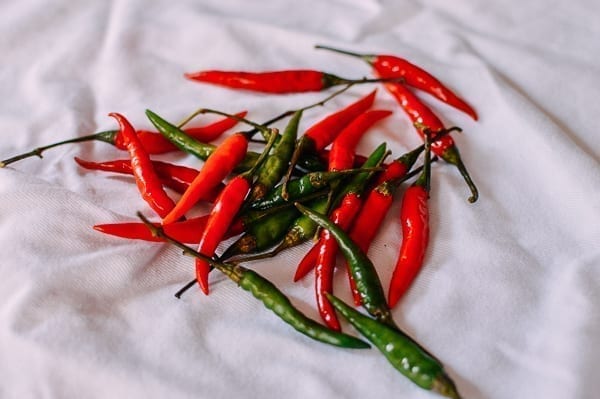
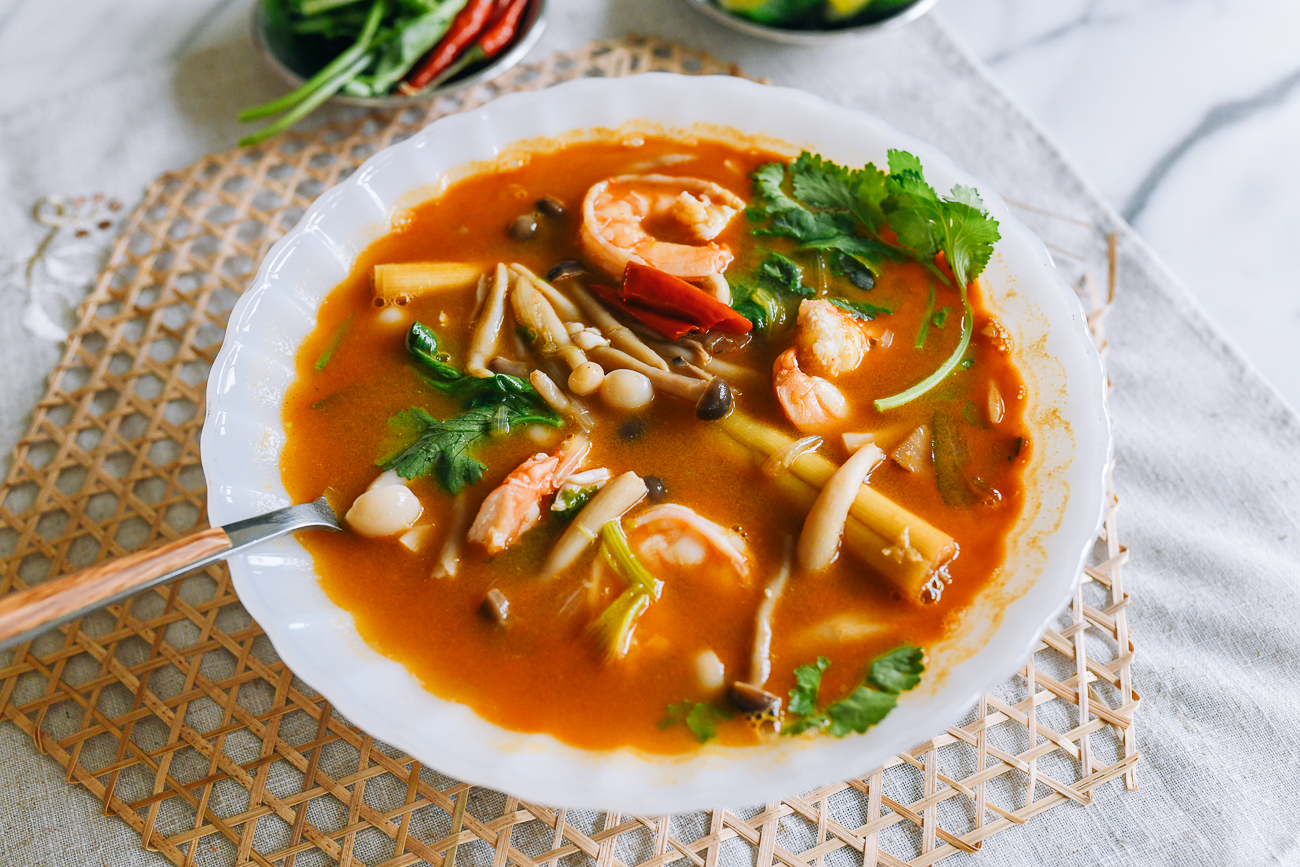
Harvest these peppers either green or red/fully ripened. They have a mellow yet lasting heat. One variety you can buy here in the U.S. is an F1 hybrid: Bangkok.
Some other Thai varieties:
- Thai Hot: Tiny chilies that face upwards and look like Christmas lights. Excellent container grower due to its small stature. SUPER SPICY!
- Prik Chi Faa: 6-inch (15cm) chilies that resemble cayenne, more mild and used in many applications, like curry paste or satay.
KOREAN CHILI PEPPERS / GOCHU (KOREAN)
Korean chili peppers, which you can eat fresh or pickled when green or use to make gochugaru and gochujang when ripe/red, are relatively mild, coming in at around 1,500 Scoville heat units. Another Korean variety is the Cheongyang pepper, which is quite a bit spicier at 10,000 Scoville units.
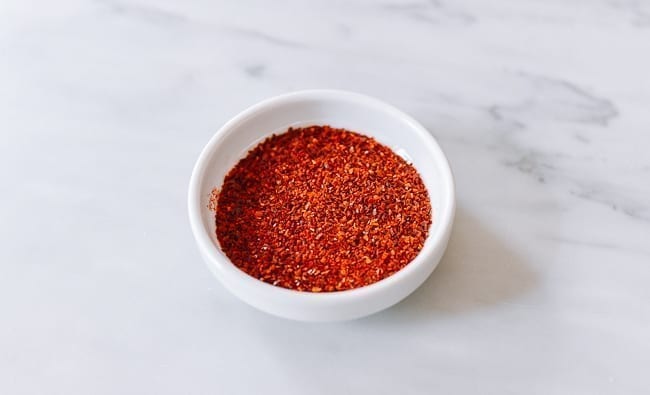
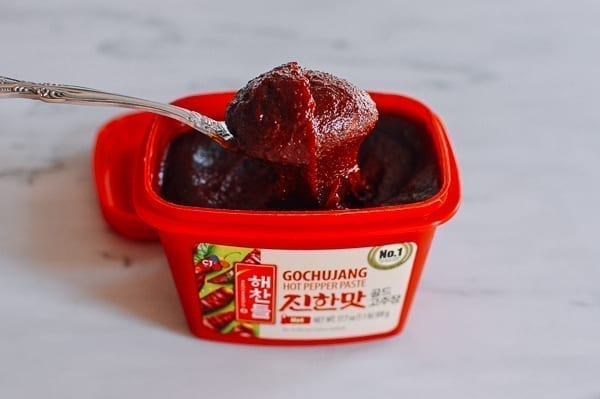
Chili peppers probably made it to Korea via Japan from the same European traders who first brought chilies to Asia. The first mention of red pepper in Korean historical records was in 1613.
Since then, chilies have become an integral ingredient in many Korean dishes, from staple kimchi to soups/stews like soondubu jigae and kimchi jigae.
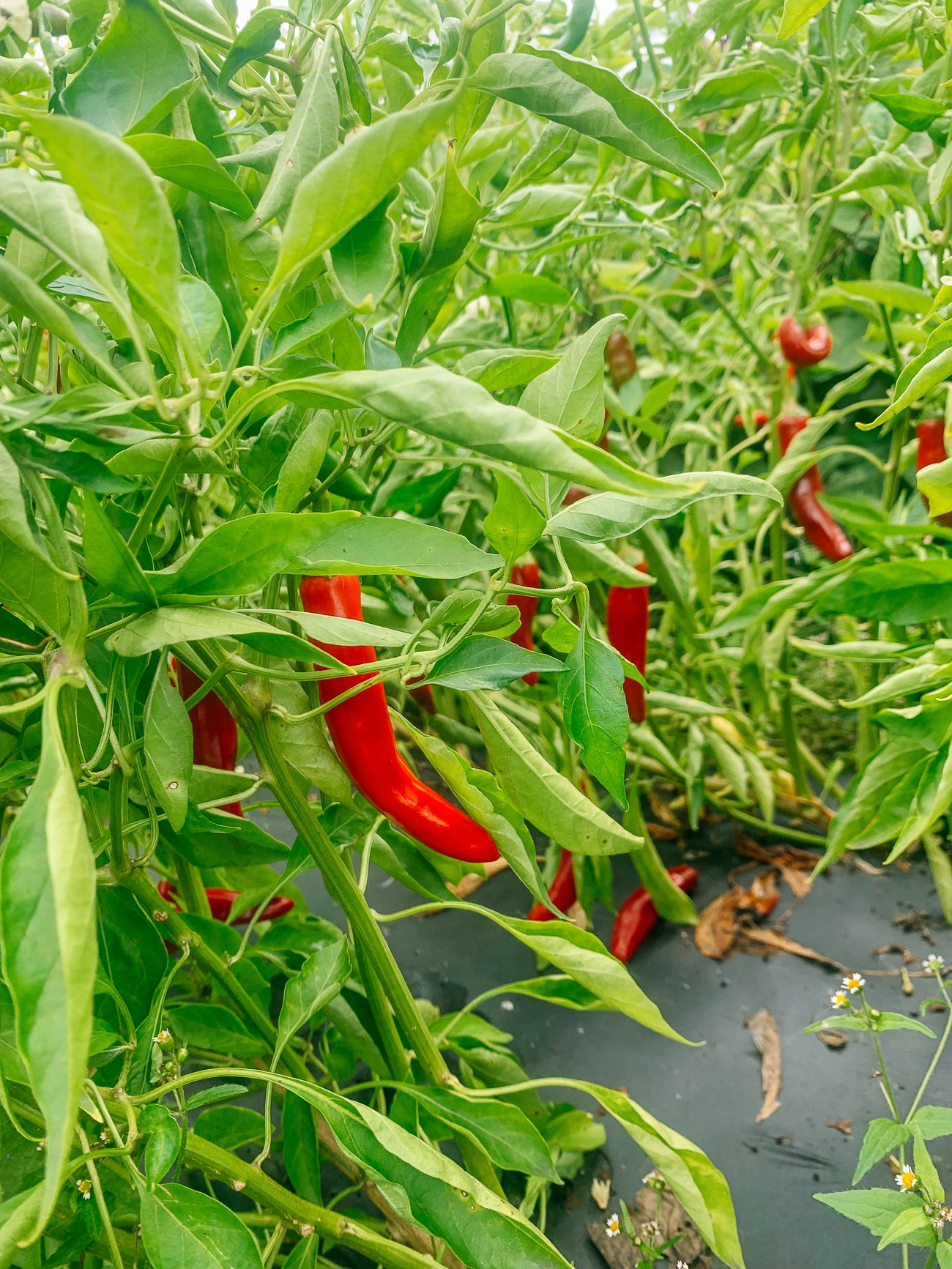
Here are a couple varieties you can seek out:
- Lady Choi: Can be used fresh or dried, succulent and fruity.
- Gochujang King: 6-inch (15 cm) peppers; may be dried and used to make gochugaru or gochujang.
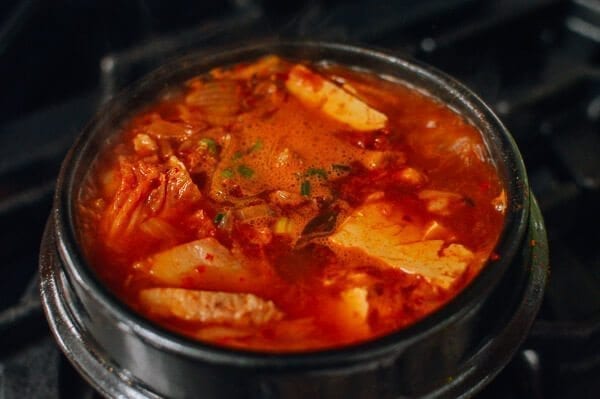
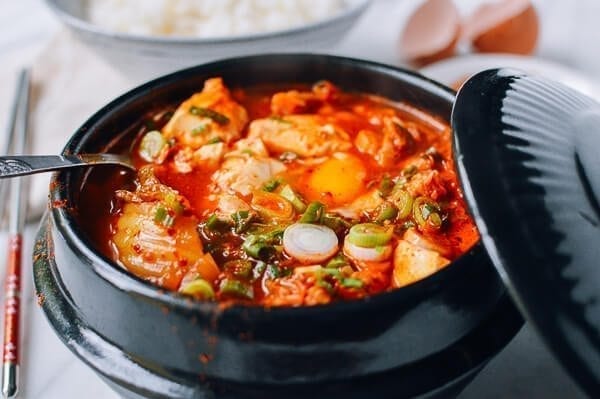
SHISHITO PEPPERS (JAPANESE)
These are a frying pepper (check out our blistered shishito recipe!), usually picked while still green. They’re generally pretty mild, but every so often, you’ll bite into a spicy one!
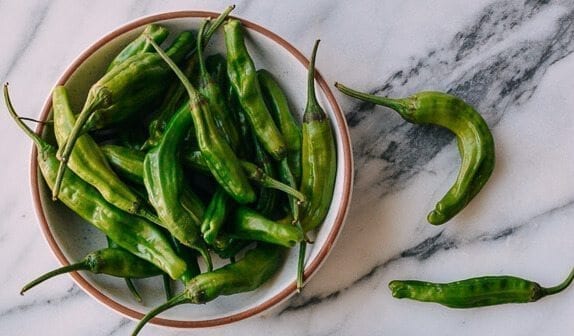
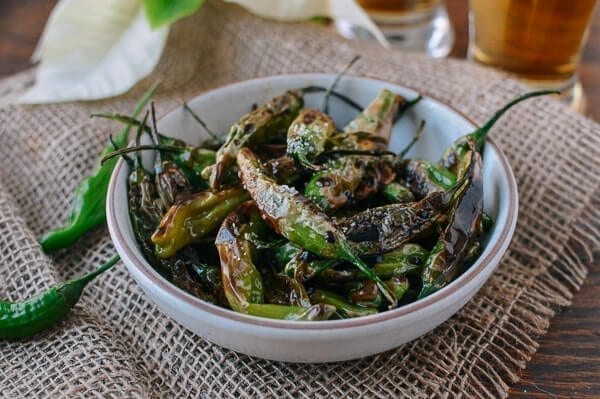
The name is derived from the Japanese words shishi (獅子) which means “lion,” and togarashi (唐辛子), which translates to “chili pepper.” Hence, in Japan, it is known as the “Lion Head pepper.”
Once introduced in the 16th century, peppers became highly cultivated and bred across Japan. Though shishitos are a Japanese variety, they’re believed to have been developed from Spanish padròn peppers, a similar pepper that also tastes great fried in hot oil and sprinkled with sea salt. (We were first introduced to them in tapas restaurants in Spain, and have grown both padròn and shishito peppers in our garden.)
Shishitos have become very popular, and can be found from many sources, including Mellow Star from Johnny’s Selected Seeds, Shishito from Truelove Seeds, and Shishito from Kitazawa.
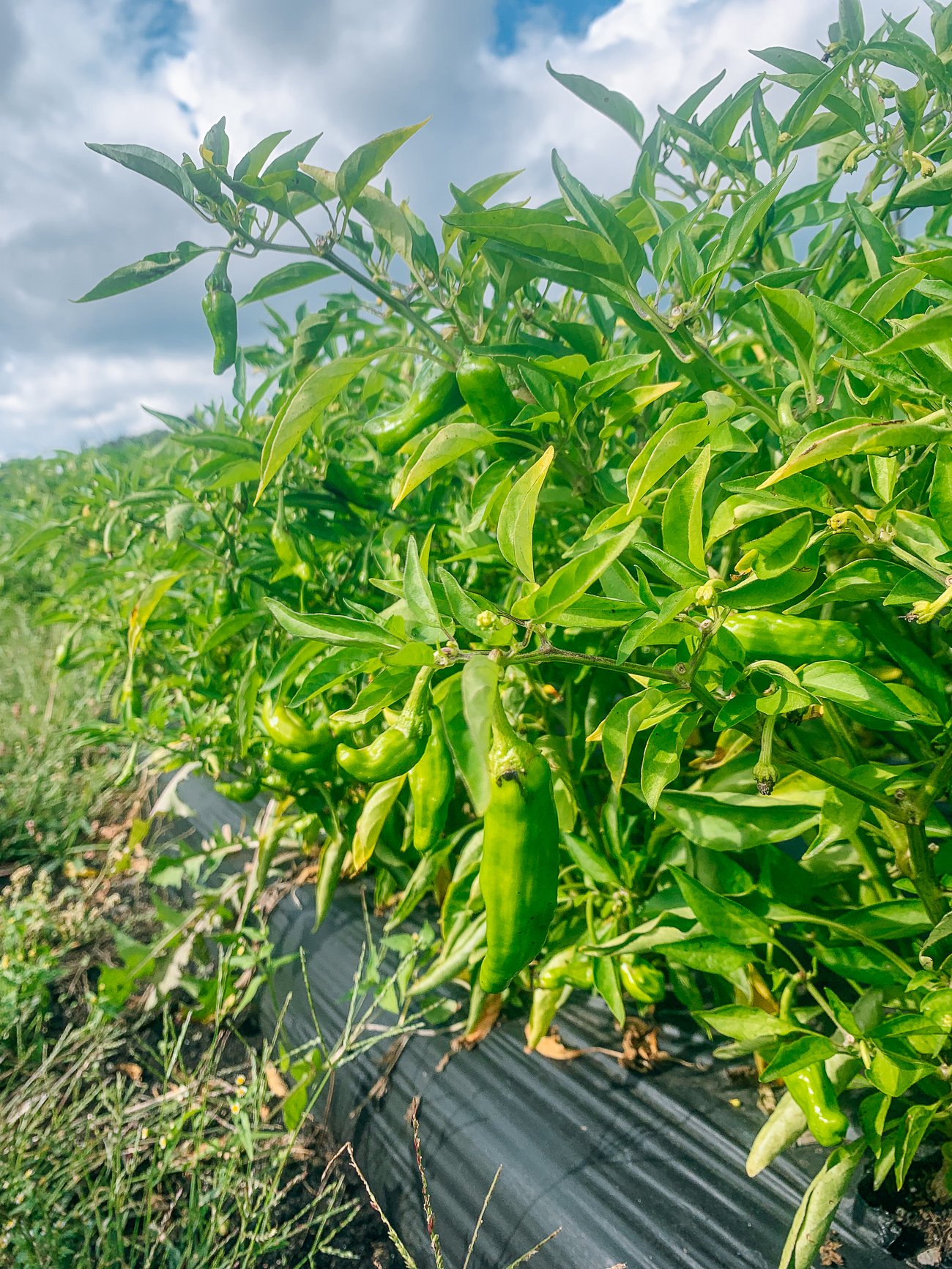
Ok, so I know you’re all wondering, what varieties did WE grow this year?
We had a mix of a few types! We grew jalapeños (which we made into tons of salsa and green sauce), cherry peppers (perfect for pickling or making into Hunan duo jiao), bell peppers (we had green bell peppers that turned yellow if left to ripen longer), and a Japanese variety of small sweet peppers called Fushimi.
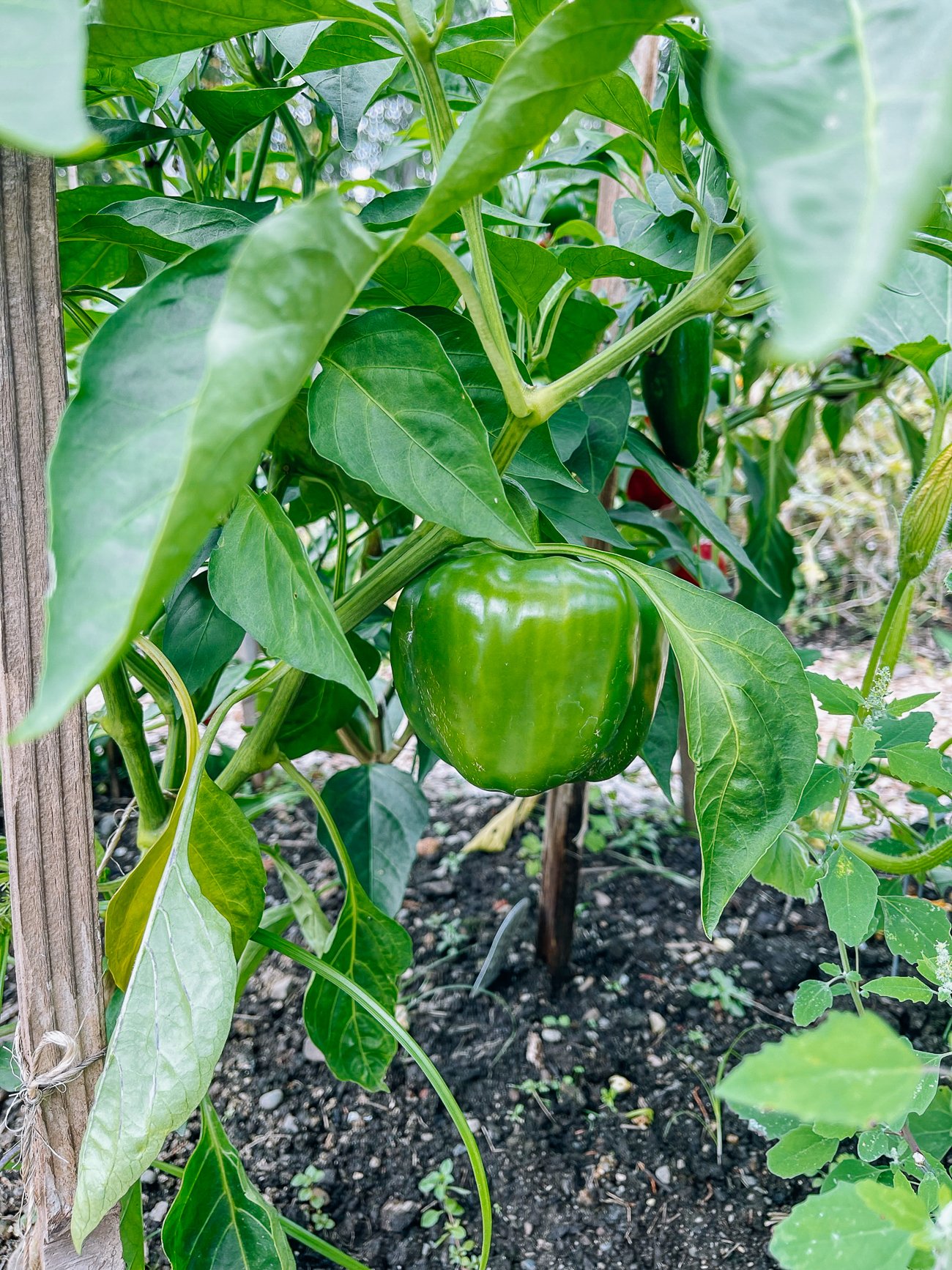
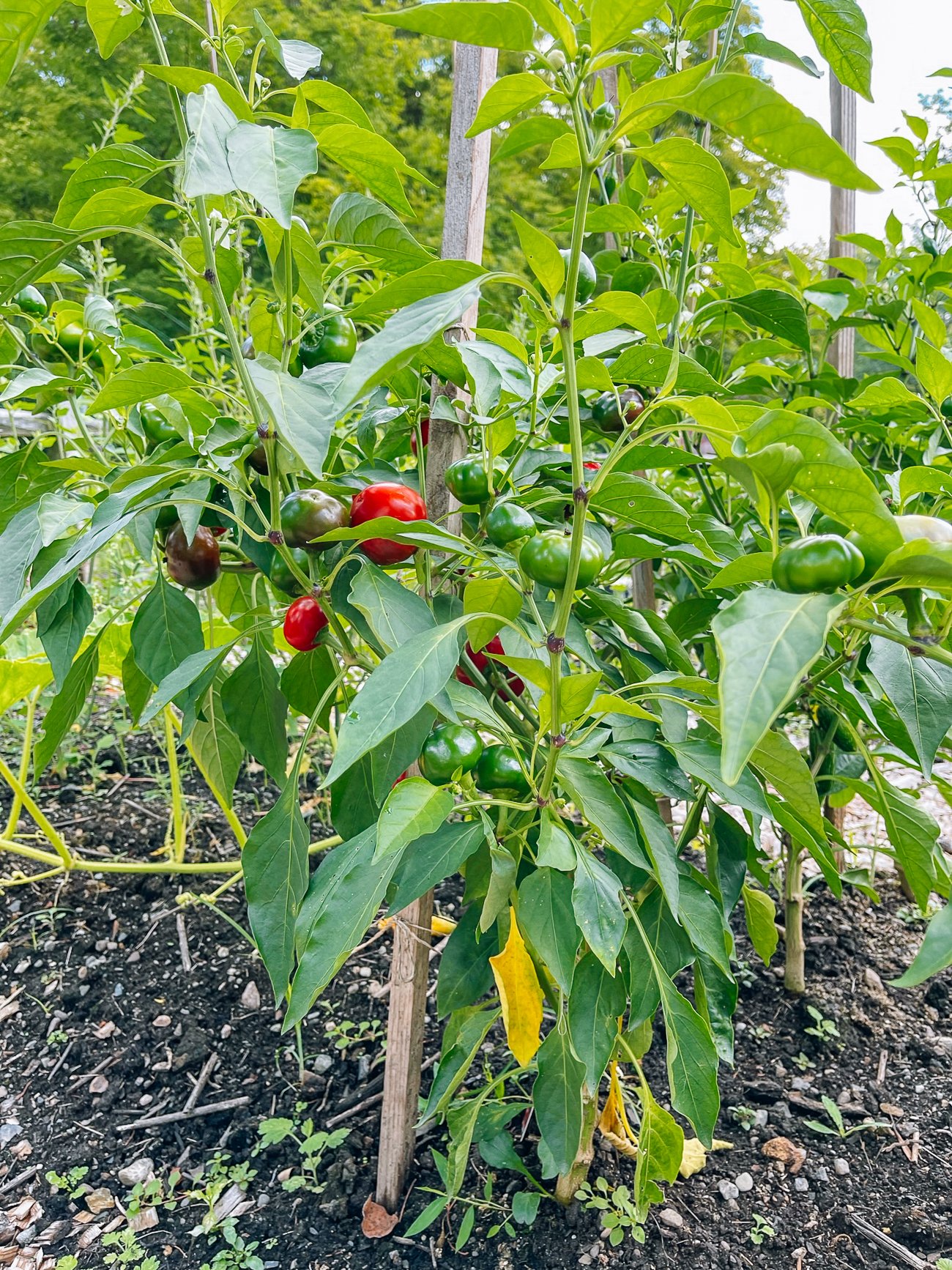
We’ve found the fushimi peppers to be totally sweet without a hint of spice. We probably wouldn’t grow it again (we like spice!), but if you’re looking for a small chili with a texture similar to cowhorn peppers that aren’t spicy, they’re a great option.
IDEAL GROWING CONDITIONS FOR CHILI PEPPERS
Despite the sheer variety of chili peppers out there, the same rules below apply to any pepper you’re looking to grow, whether it’s sweet peppers, frying peppers, or spicy chilies.
Peppers are frost sensitive, so they are a summer weather crop only. You can transfer established plants into pots, bring them inside before last frost, and they will continue to live, but they need adequate light to thrive.
Peppers are actually perennial plants that are grown as annuals, so if you live in a tropical area, you can have repeat harvests from your plants over several years, as long as you replenish the soil.
Peppers need full, blazing sun and hot weather. Be sure to plant them where there is no shade. Shade can really affect a pepper plant’s ability to set fruit and ripen. Be mindful of surrounding buildings and even trellis structures in your garden that might cast shade.
Like eggplant, chilies like rich, loamy soil (balanced between sand, clay, and silt), which is well-draining but also moisture-retentive.
Again, they generally have the same requirements as eggplants. Water regularly, but make sure to let the soil dry out in between waterings.
According to Christina, adequate watering will encourage plants to put out more blooms (i.e. fruits), but too much watering can cause the plant to grow too quickly and the fruit to set too soon. If there is too much fruit and not enough leafy growth, the fruit can become damaged and sun scalded.
This depends on the variety you’re growing (check the seed packet for instructions), but generally, 18 inches (45cm) apart will do it!
60 to 80 days after transplanting, depending on the variety, and whether you’re looking to harvest them while green, or after they’ve fully ripened.
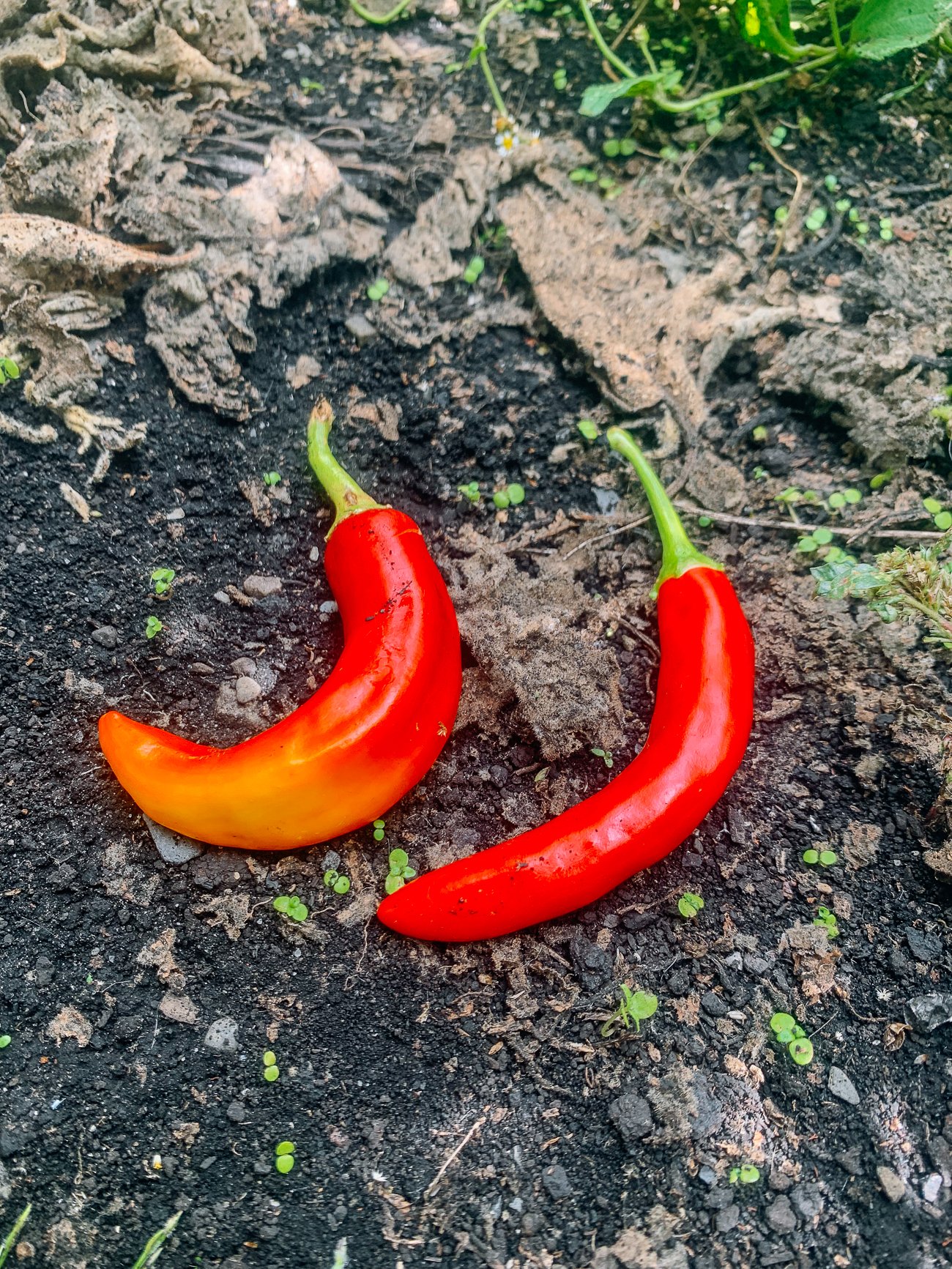
HOW TO GROW PEPPERS FROM SEED:
Peppers are a transplant-only crop. Do not try to plant them outside in spring! They need heat to germinate and can take some care at the beginning, but once established, will take care of themselves.
Start them indoors 8-12 weeks before the last frost. In a seed tray with peat-free potting soil or garden compost, sow seeds ¼ inch (0.6cm) deep. Water the seed tray well, and place on a heated mat.
The heat will ensure that they germinate; without the heated mat, they may not sprout. You can also cover the trays with a clear plastic lid (we use rinsed plastic salad boxes) to create humidity and promote germination.
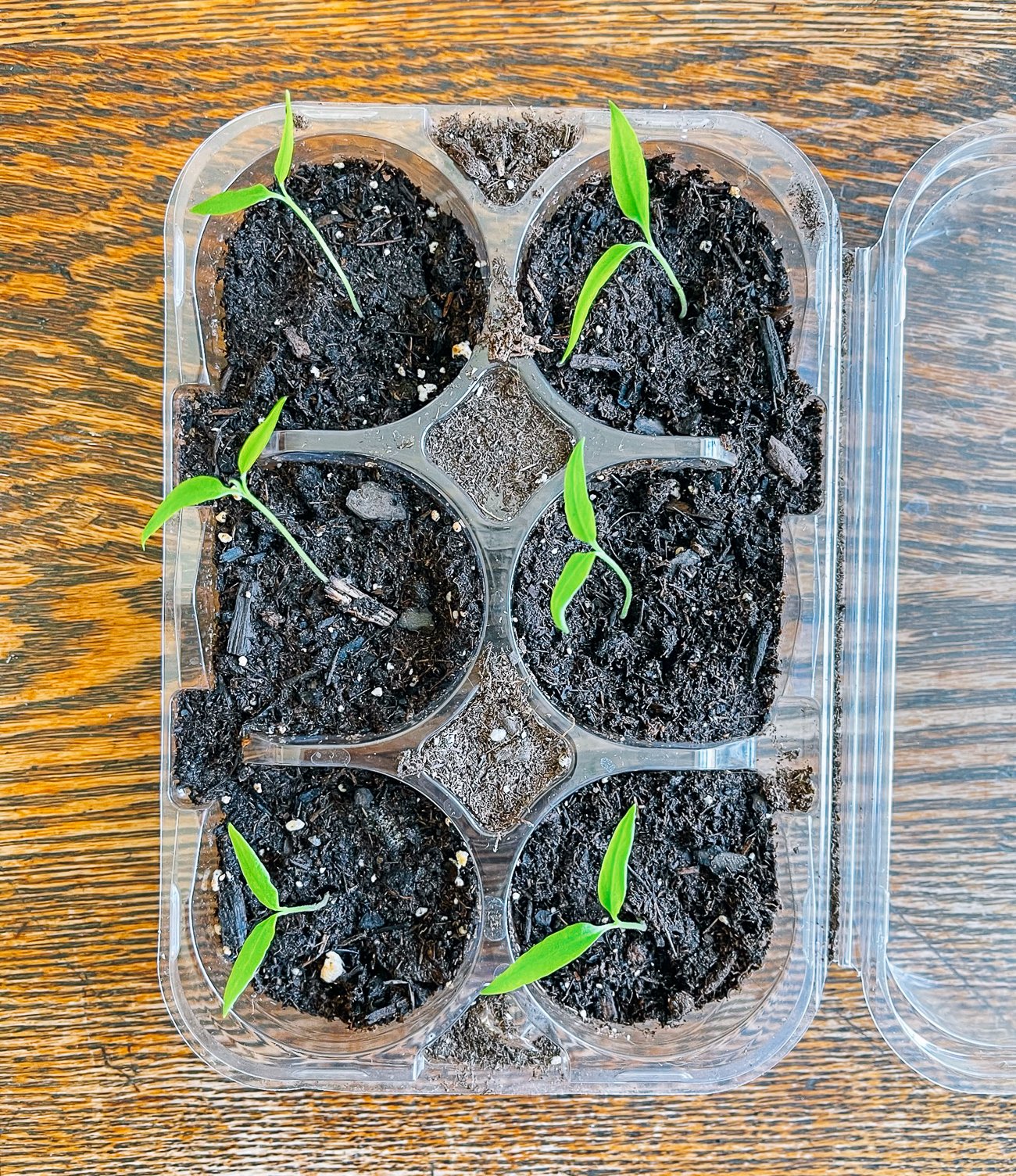
When the seedlings appear, remove any plastic lids, and remove the tray from the heated mat. Place the seedlings in a very well-lit area, such as a greenhouse or an indoor space with grow lights.
Pot them in small pots when they have a few sets of true leaves, which will allow them to grow and develop a healthy root system.
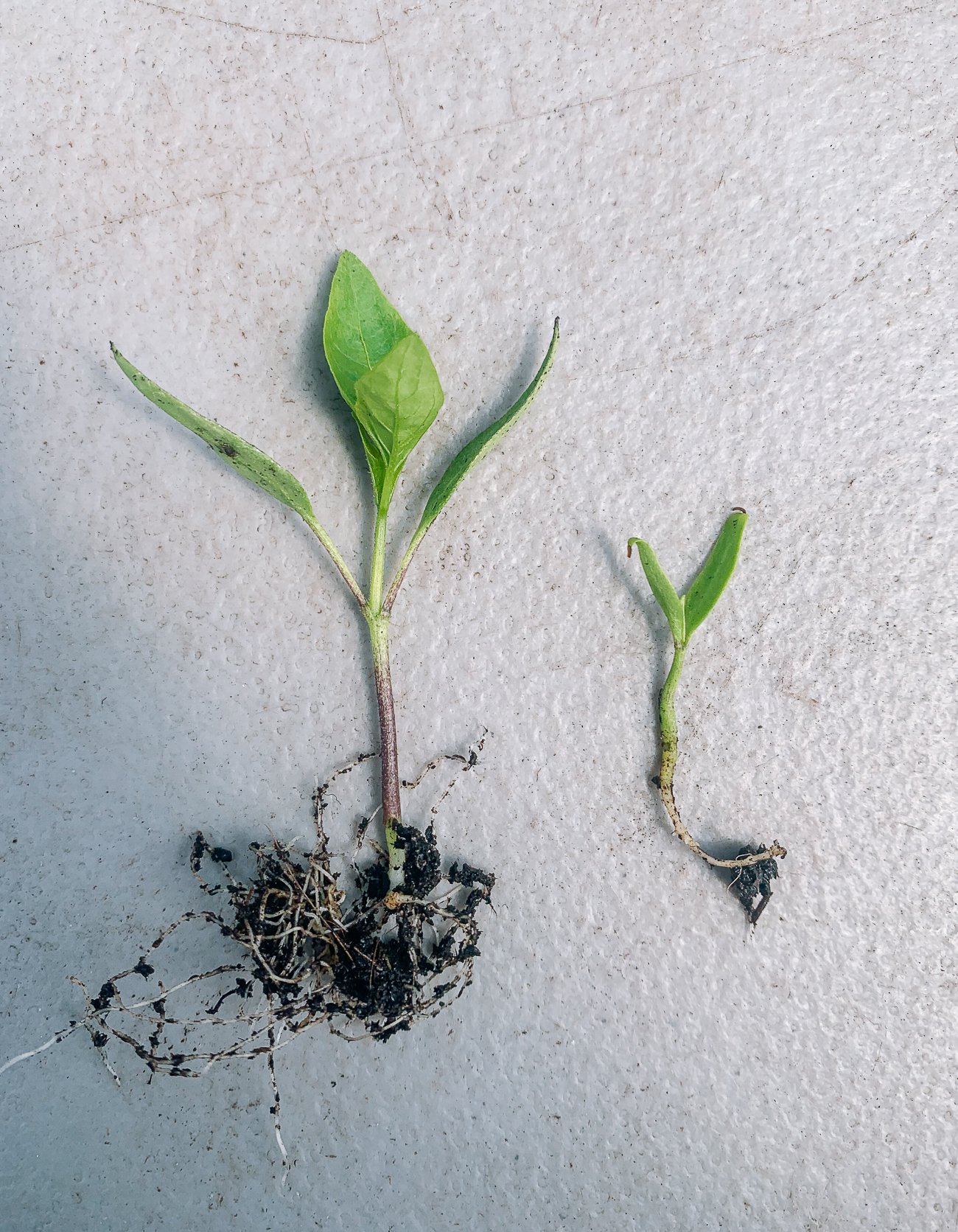
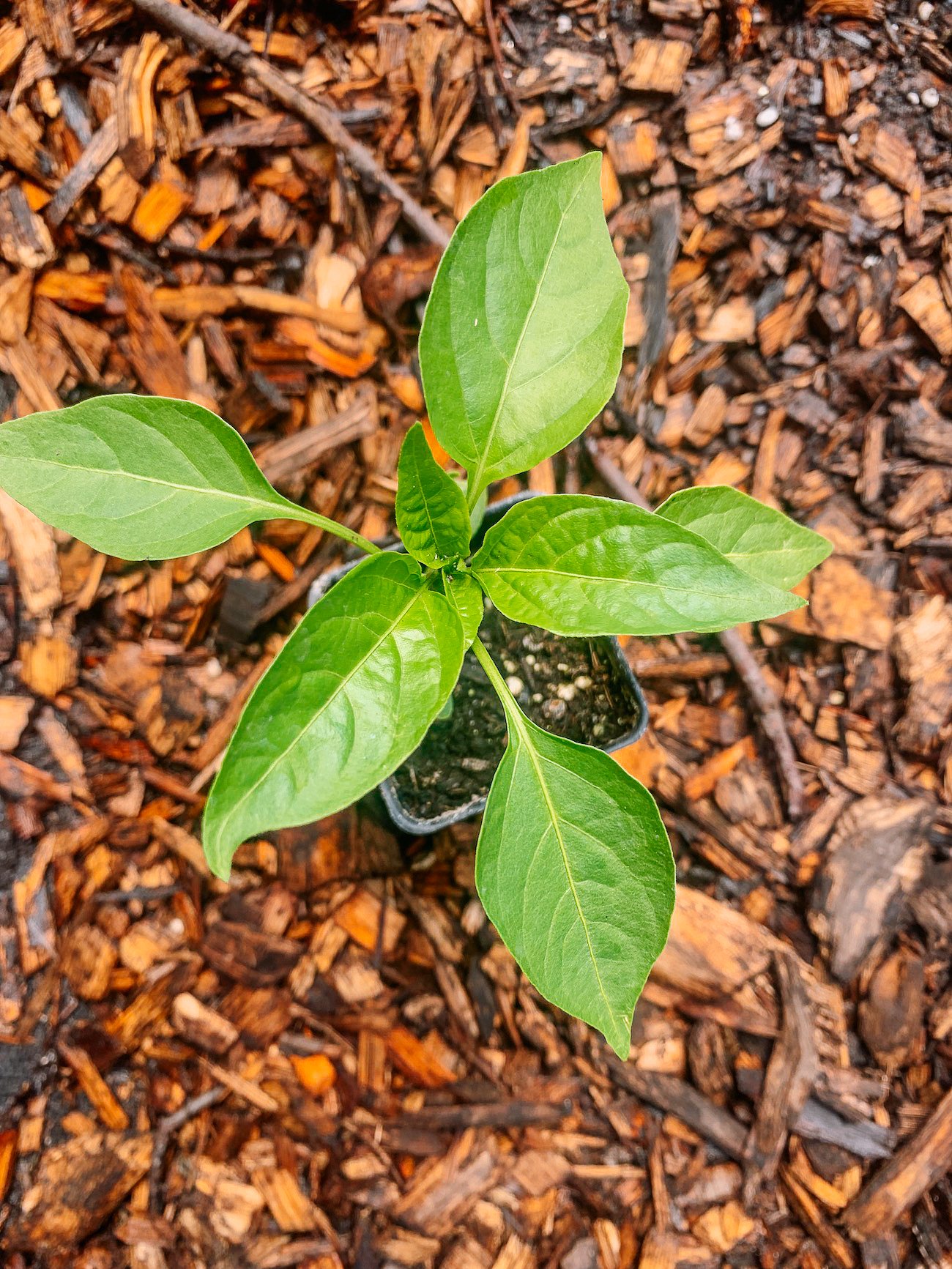
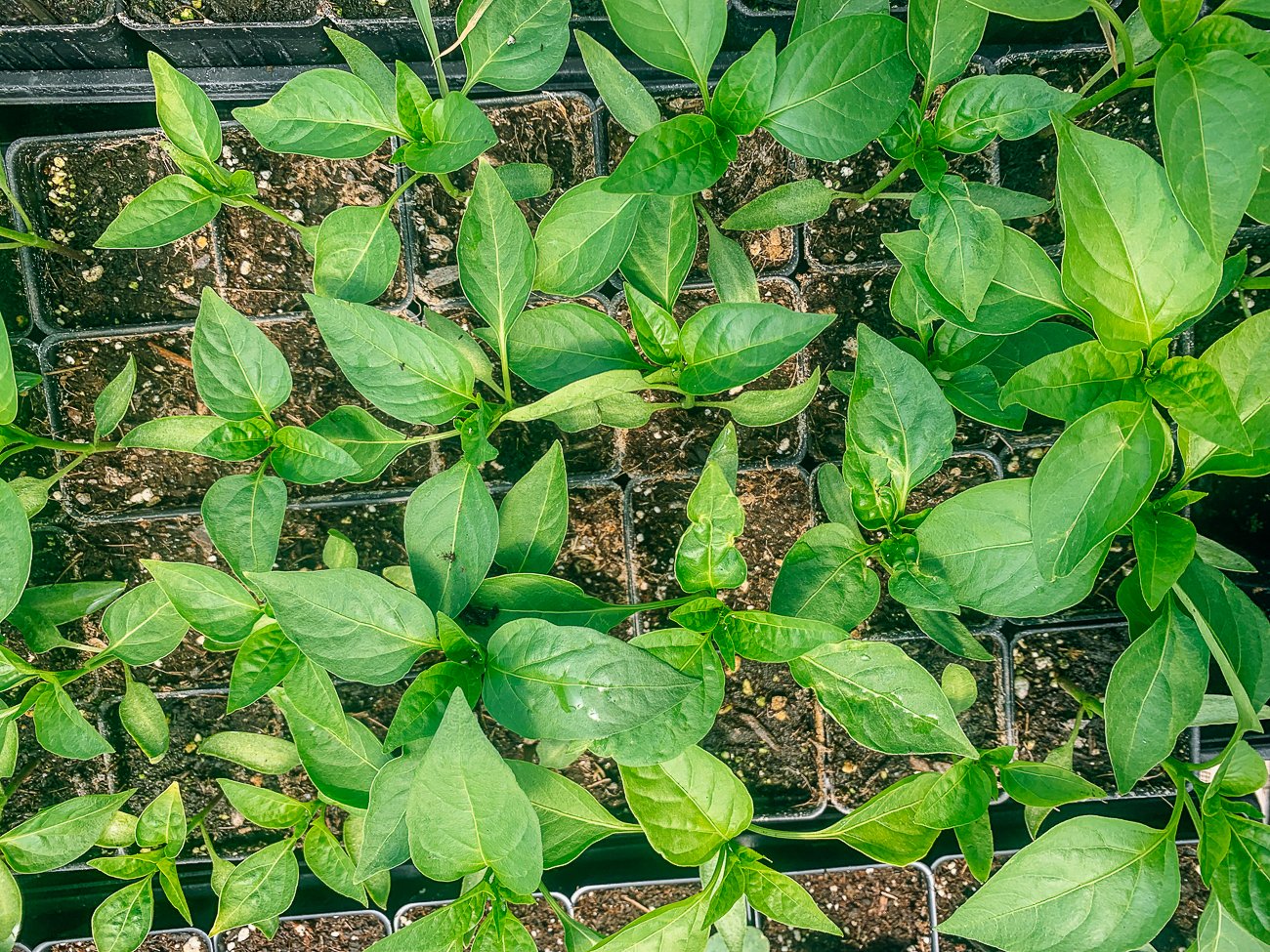
Transplant them outdoors when nighttime temperatures are consistently above 55-60°F (13-15°C). Make sure to harden them off (put them outdoors to acclimate to the elements) for 1-2 weeks first.
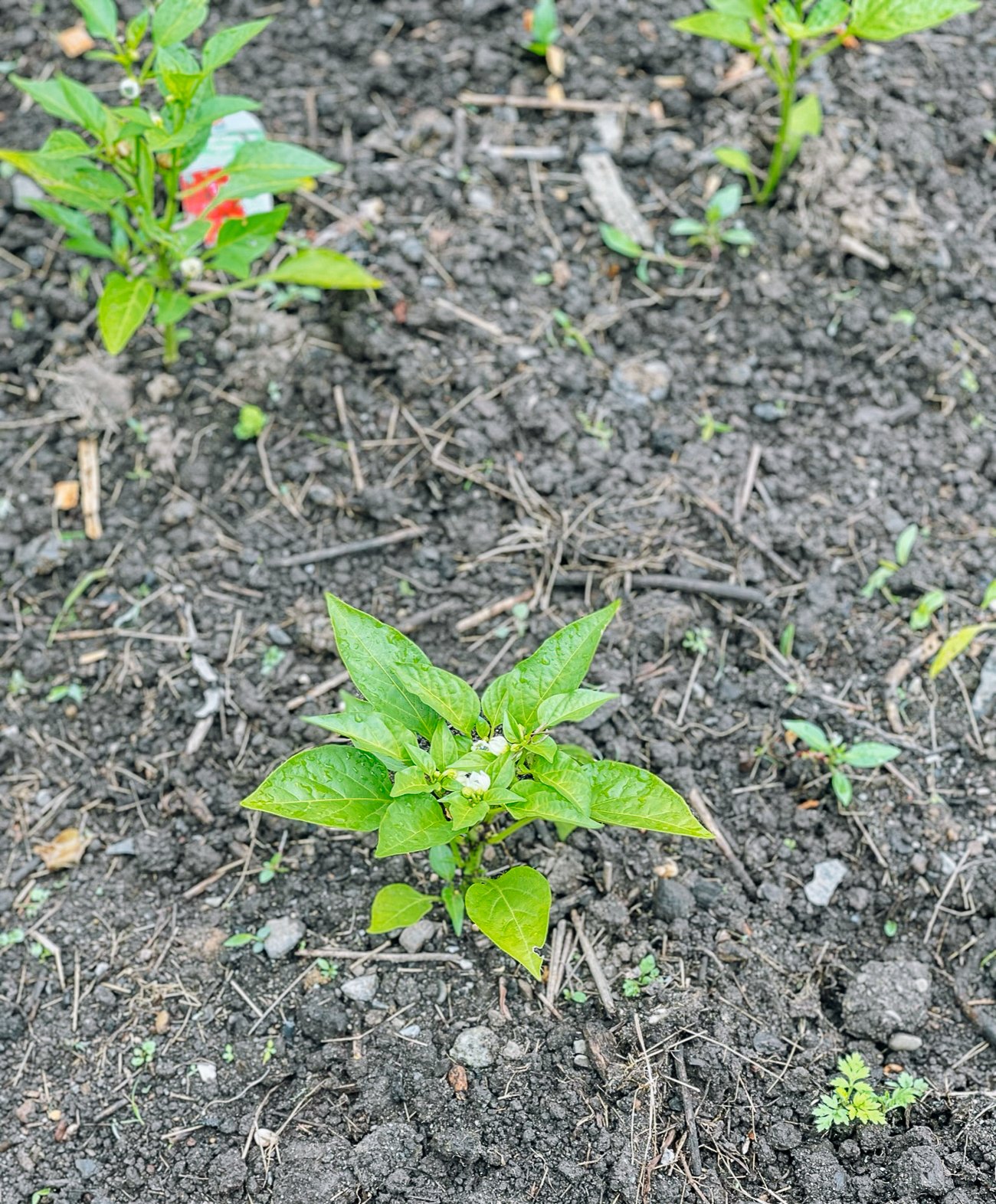
If the plants get very large and heavy with fruit, they may need some staking to give them extra support.
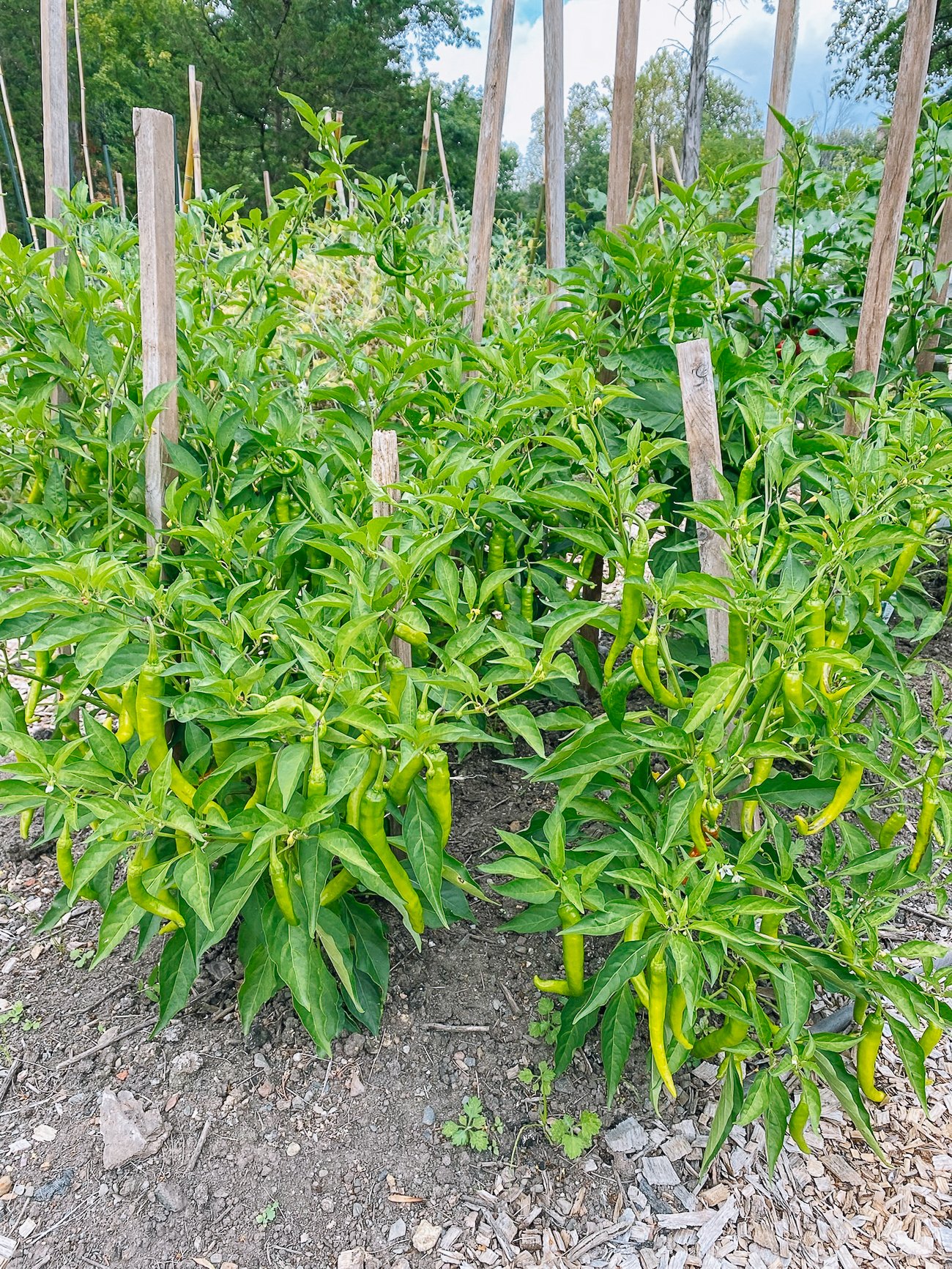
You can also grow many chilies indoors or on balconies in containers. When grown in a pot, the plants tend to be a bit smaller (depending on the pot’s size). But they can live happily in pots so long as they have sufficient sunlight.
PEST MANAGEMENT
Christina: “Peppers have very few pests compared to other crops! It’s great!”
Deer may graze on plants when they are young, and rodents and groundhogs may also eat young plants. However, you won’t find many insect pests for the plants.
The occasional tomato hornworm might nibble on established pepper plants, but you won’t get an infestation. Hand-removing any insects you see is a good method of control. You might also find aphids occasionally, but aphids are more of a general pest. Use insecticidal soap or neem oil to control them.
Pepper maggots (and several other worm insects like cutworms or corn earworms) may sometimes eat the fruit and leave small holes, often at the tip of ripe peppers. (You won’t see them when your peppers are green, only when red, yellow, orange etc.) According to Christina, they don’t bother chili peppers much, but are more common on sweet peppers.
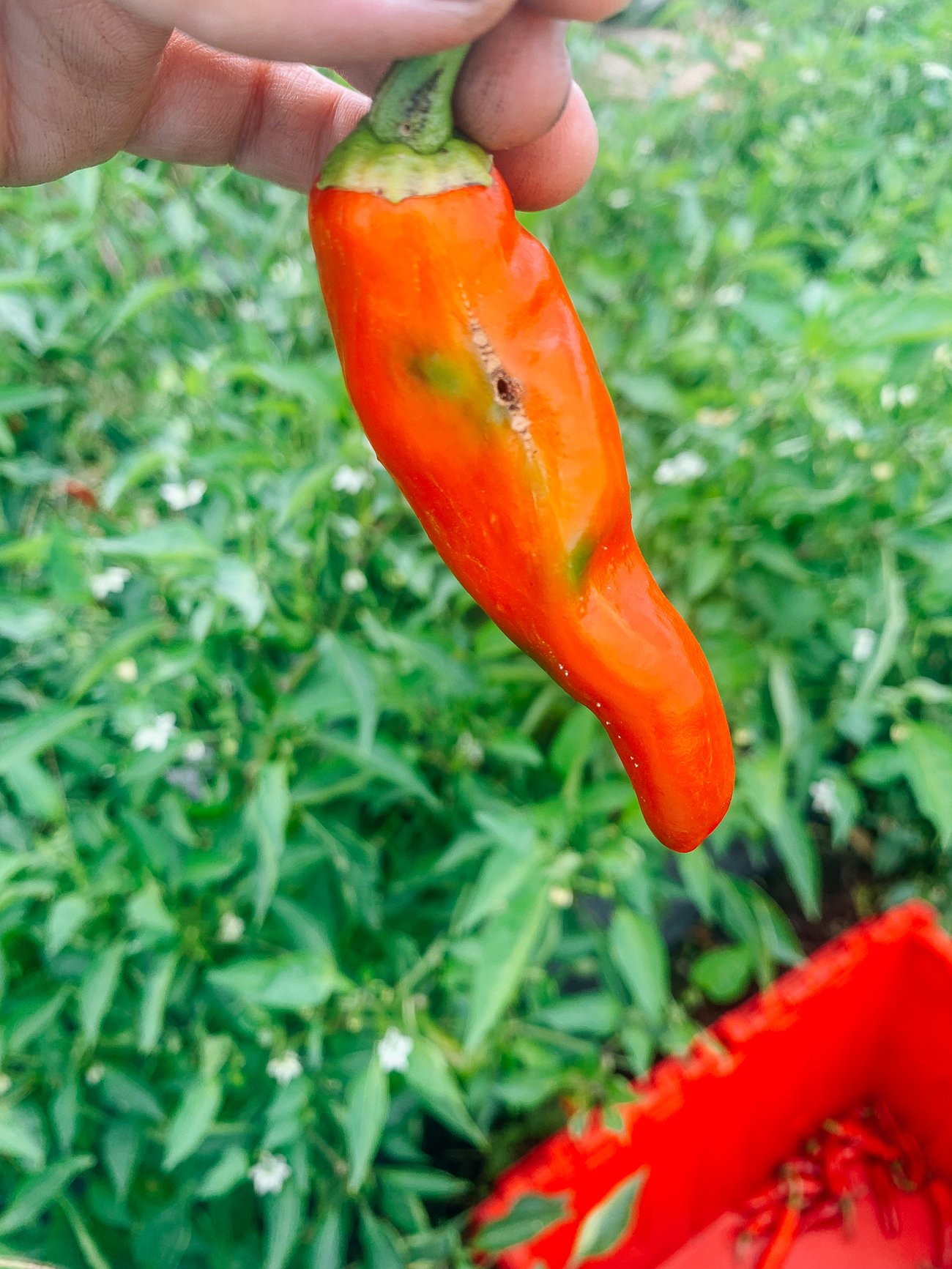
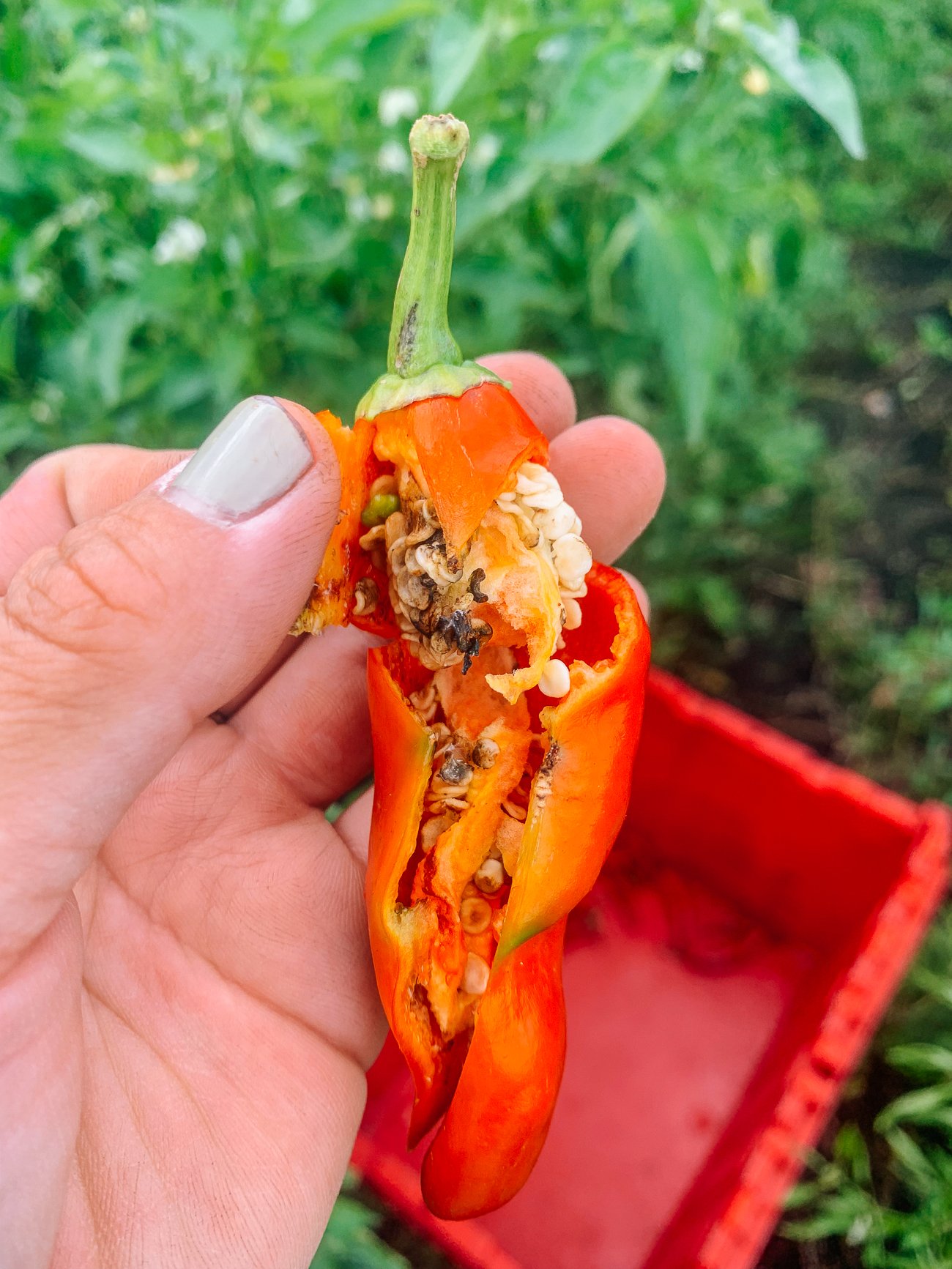
HARVESTING & STORING
Most peppers are spicy even when green, but they need to be at their final size. For example, a chili that grows to 3 inches (8cm) and then turns red when ripe will be spicy at 3 inches (8cm) and green, but not when 1 inch (2.5cm) and green.
Not all green chilies taste good enough to harvest at that stage. Usually, the seed packet will indicate if you can/should use it at both stages.
Some plants tend to produce spicier fruit as the season progresses. So if things taste mild at the start and you’re looking for more spice, there is still hope!
Harvest simply by pulling fruits off the plant. Most fruit hangs down from the plant, but some varieties point upwards. Avoid leaving the chilies on the plant for too long. Otherwise, they may split or it can result in fewer new fruits forming.
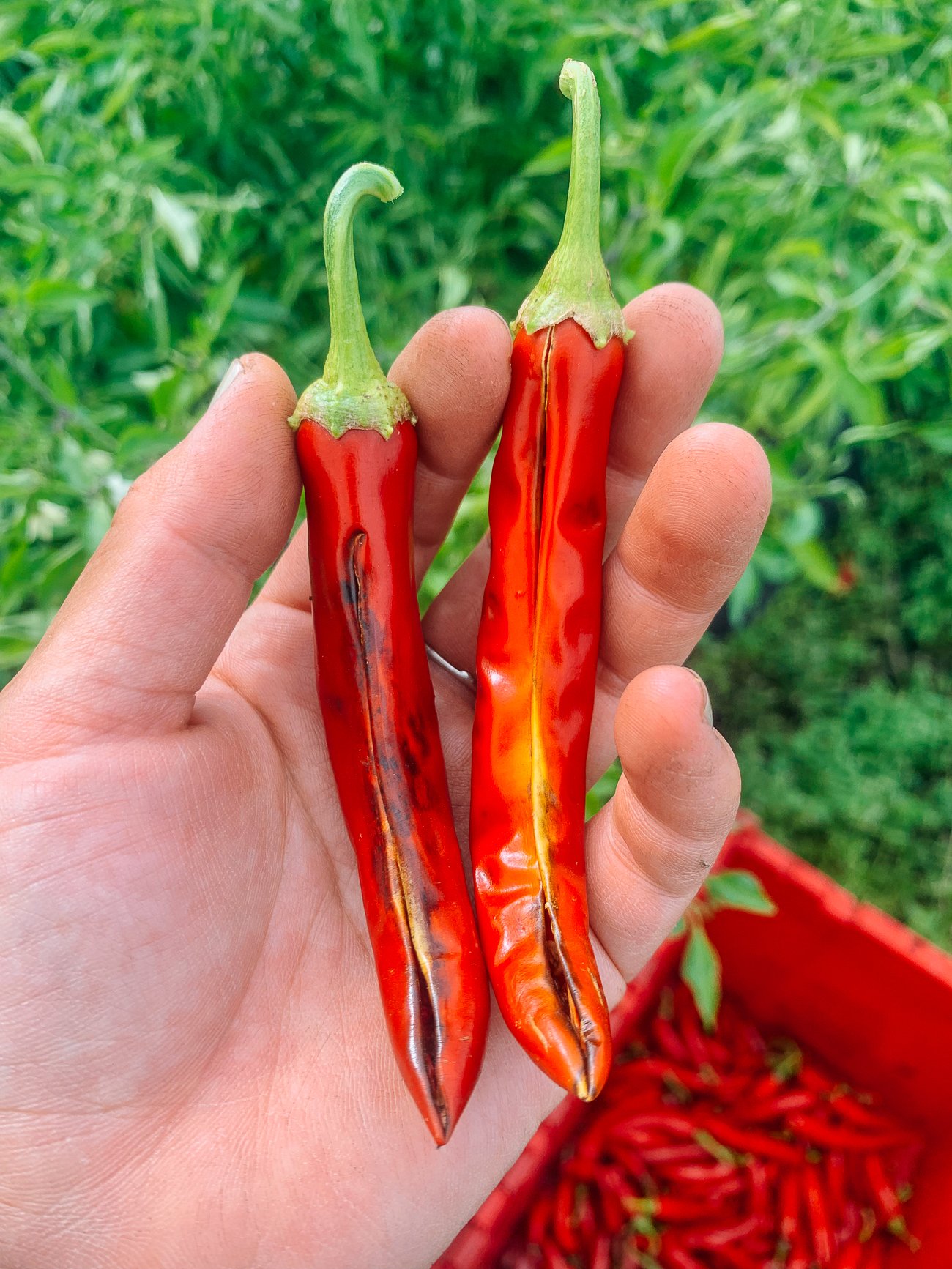
Place the harvested fruits in a produce bag in the fridge.
Some peppers are ideal for drying, and if you live in a dry climate, they can dry right on the plant. Otherwise you can use a dehydrator, your oven at a low temperature setting, sun-drying, or making a ristra (this works best with smaller peppers like bird’s eye)
Peppers also freeze very well. There’s no prep needed. Just pop in a freezer bag while dry, and that’s it. (See our post on how to freeze herbs, aromatics and chili peppers.) Note that they aren’t great for fermenting or pickling after freezing, but fine for any other cooking or non-fermented hot sauce application.
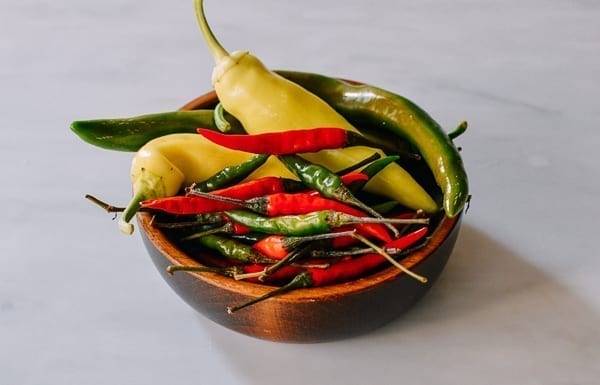
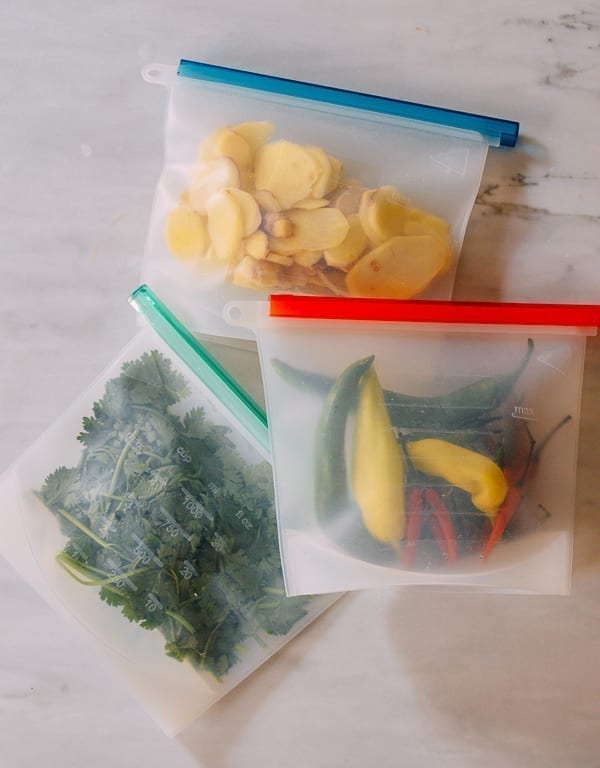
ORIGINS AND MIGRATION: CHILIES IN CHINA
After chili peppers first arrived at coastal trading posts in Southeast Asia in the late 16th century, Chinese seamen brought them back home, valuing them not for consumption, but for their beauty. (There are still purely ornamental varieties you can grow!)
It took 50 or so years before they became part of local cuisine, particularly in Guizhou Province, where salt taxes were high and ethnic minorities started using chili peppers to add flavor to their food. Throughout the 18th and 19th centuries, chilies grew in popularity until they became ubiquitous throughout Southwestern China (Guizhou, Hunan, Sichuan, and Yunnan).
Due to its origins in peasant cuisine, upper classes didn’t take to chilies as quickly, believing that they were unhealthy. Eventually, chilies traveled to other provinces in China, as the people of Southwestern China migrated to large cities for work and brought their cuisine along.
To read more about how the chili pepper became as popular as it is today in China, check out this article.
Hope you enjoyed this post on how to grow chili peppers in your garden! Although this growing season is coming to a close, we hope that these learnings and tips will help you grow delicious chilies in the years to come!

No comments:
Post a Comment